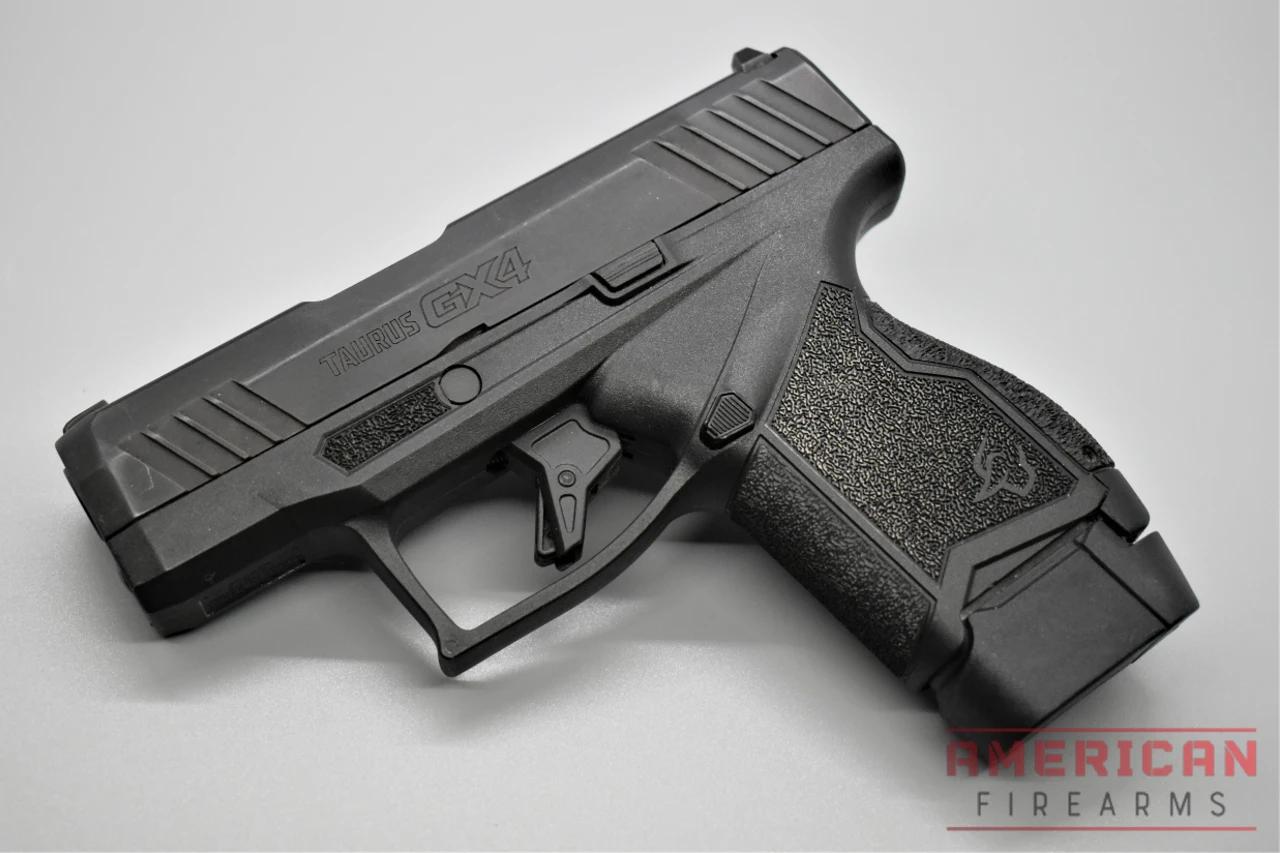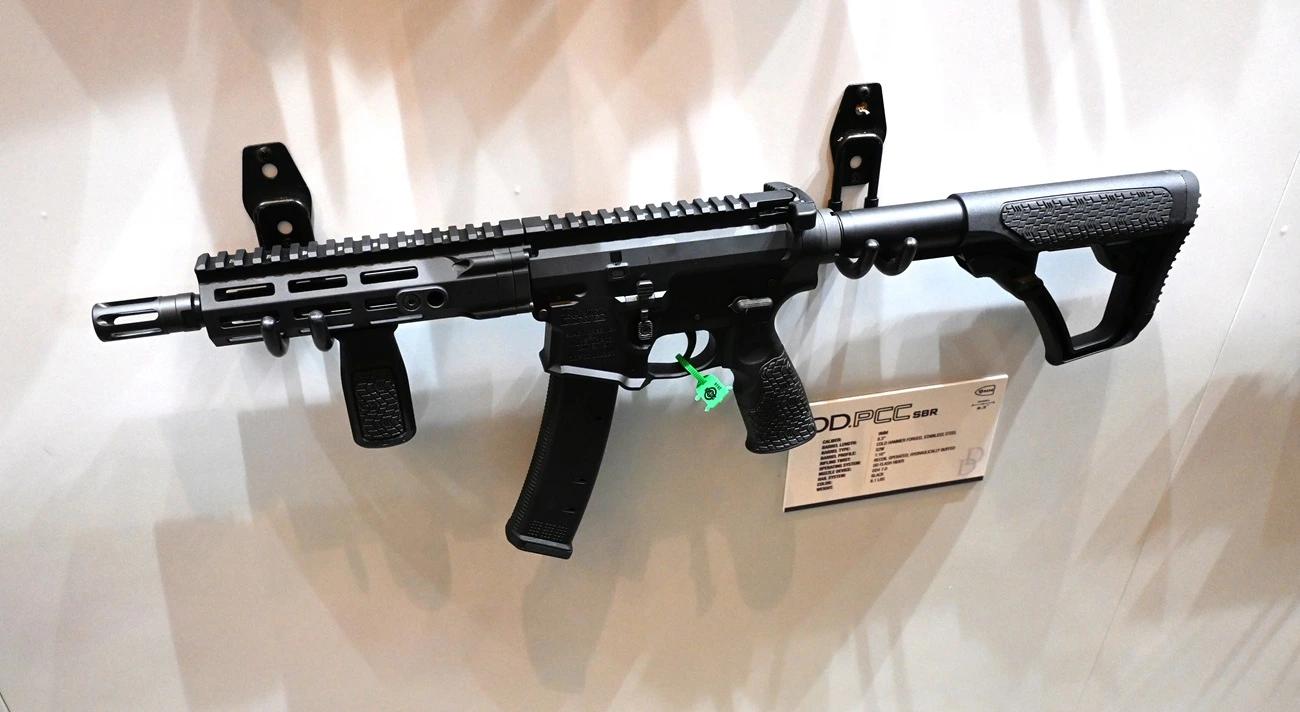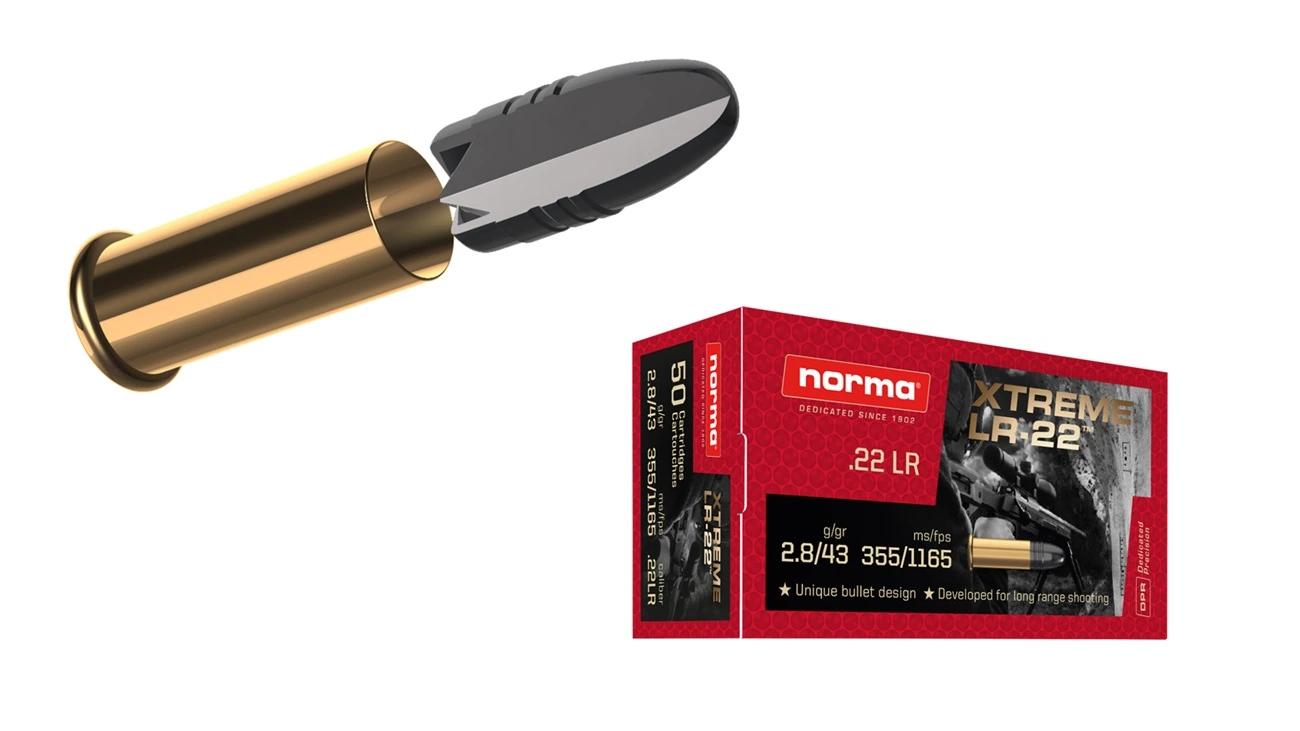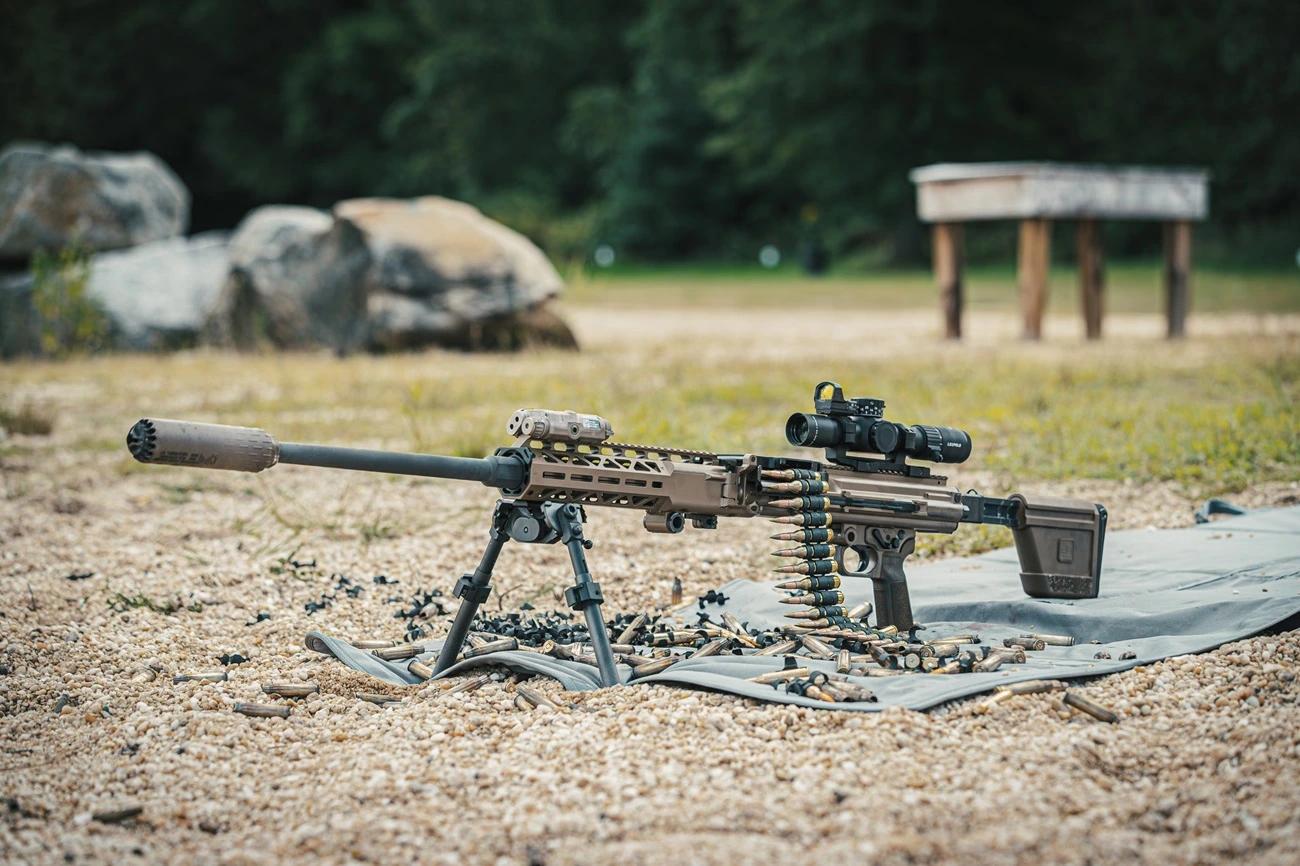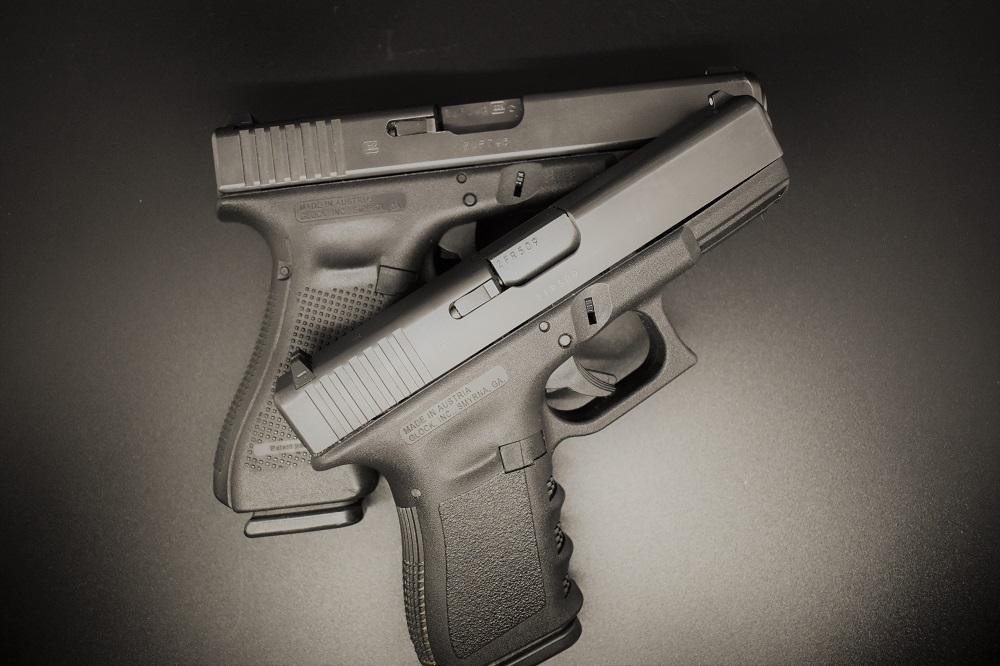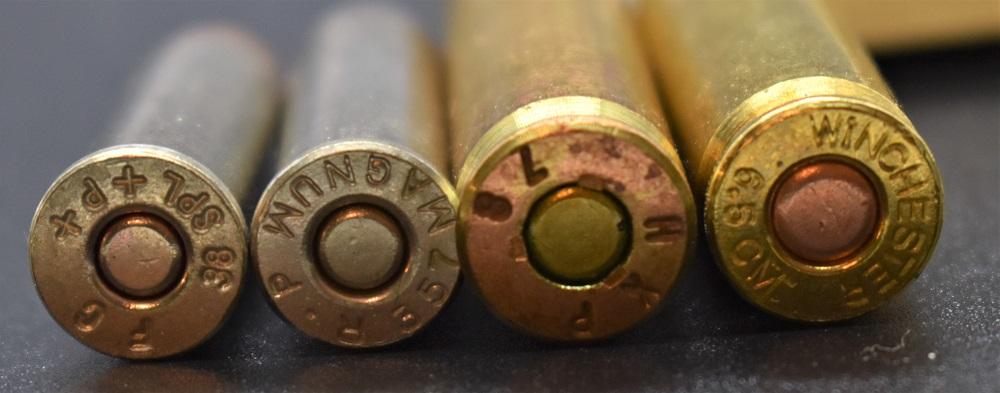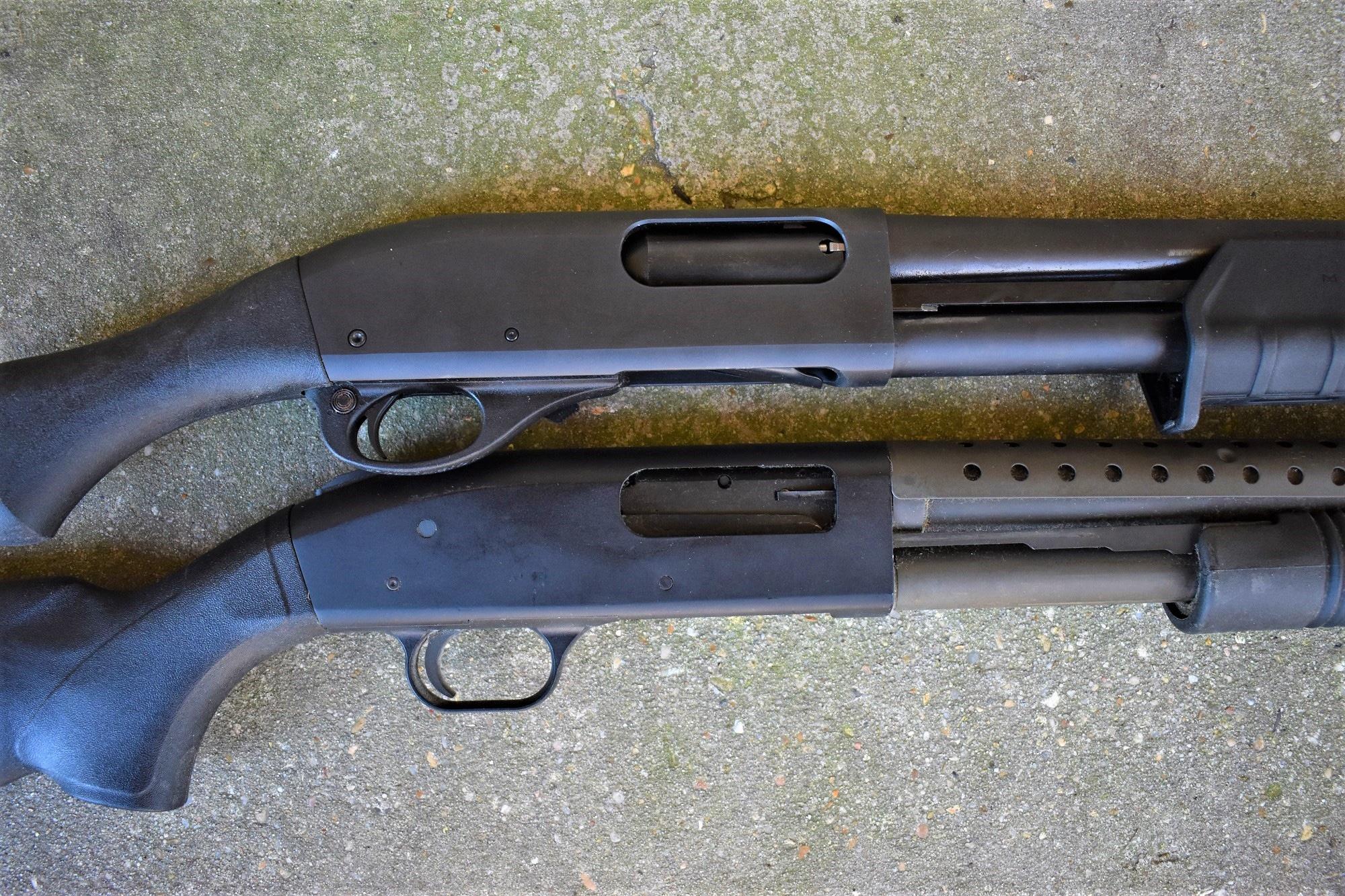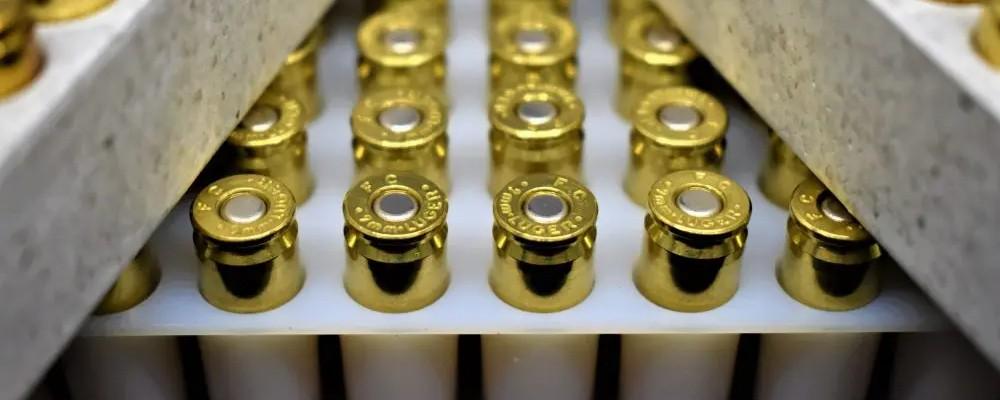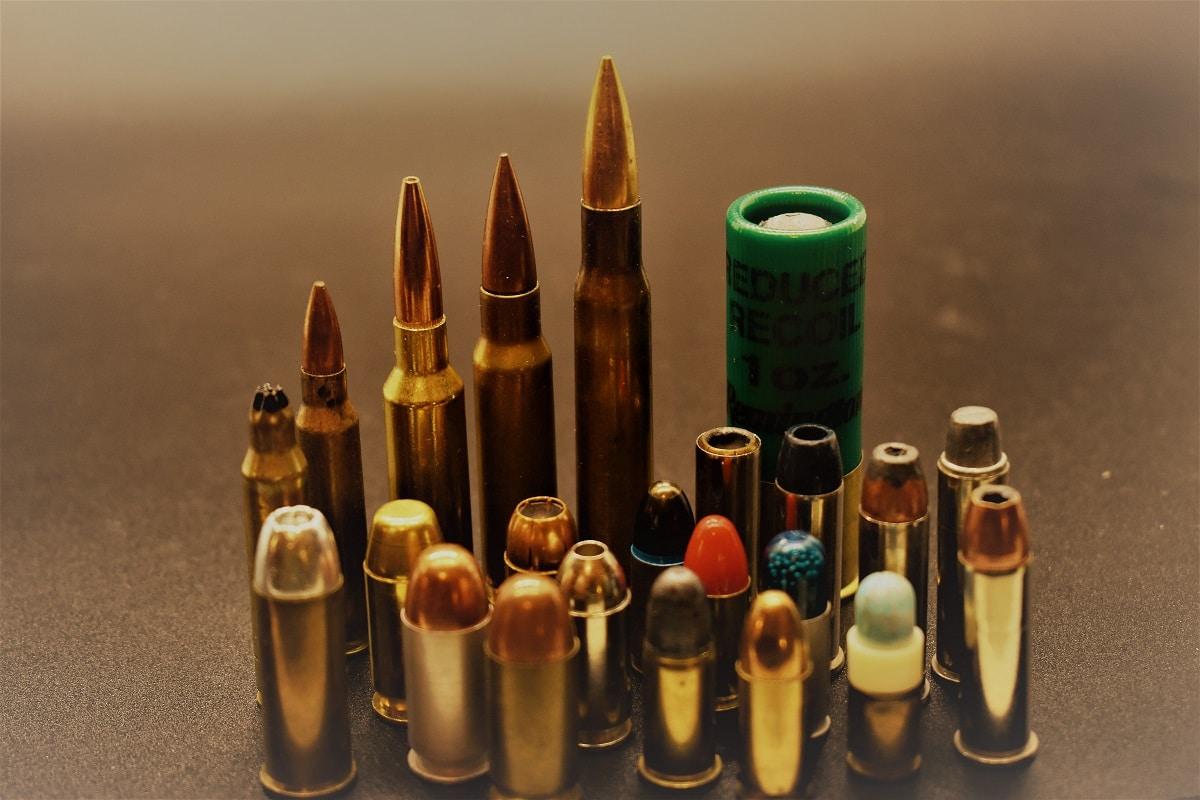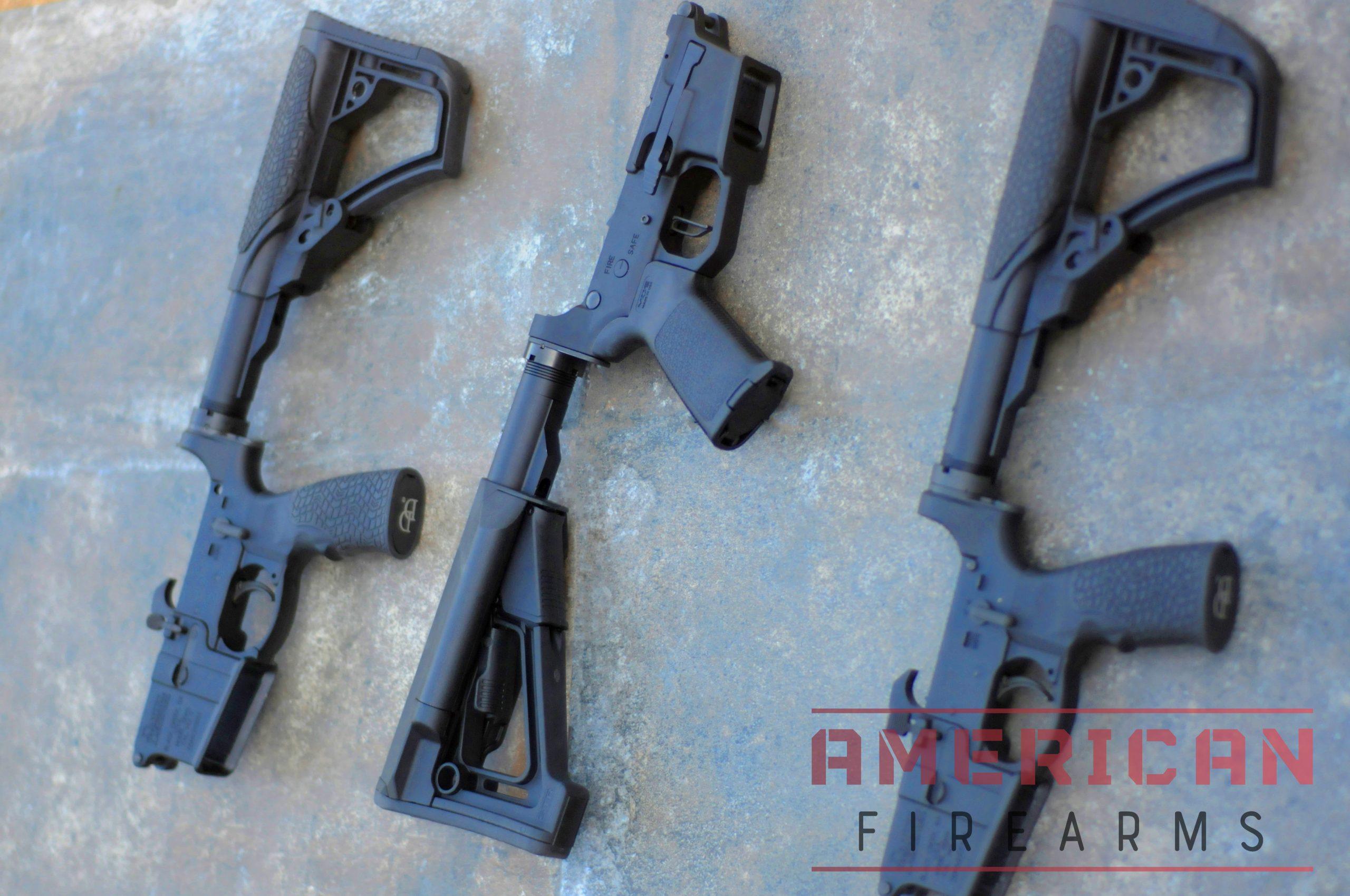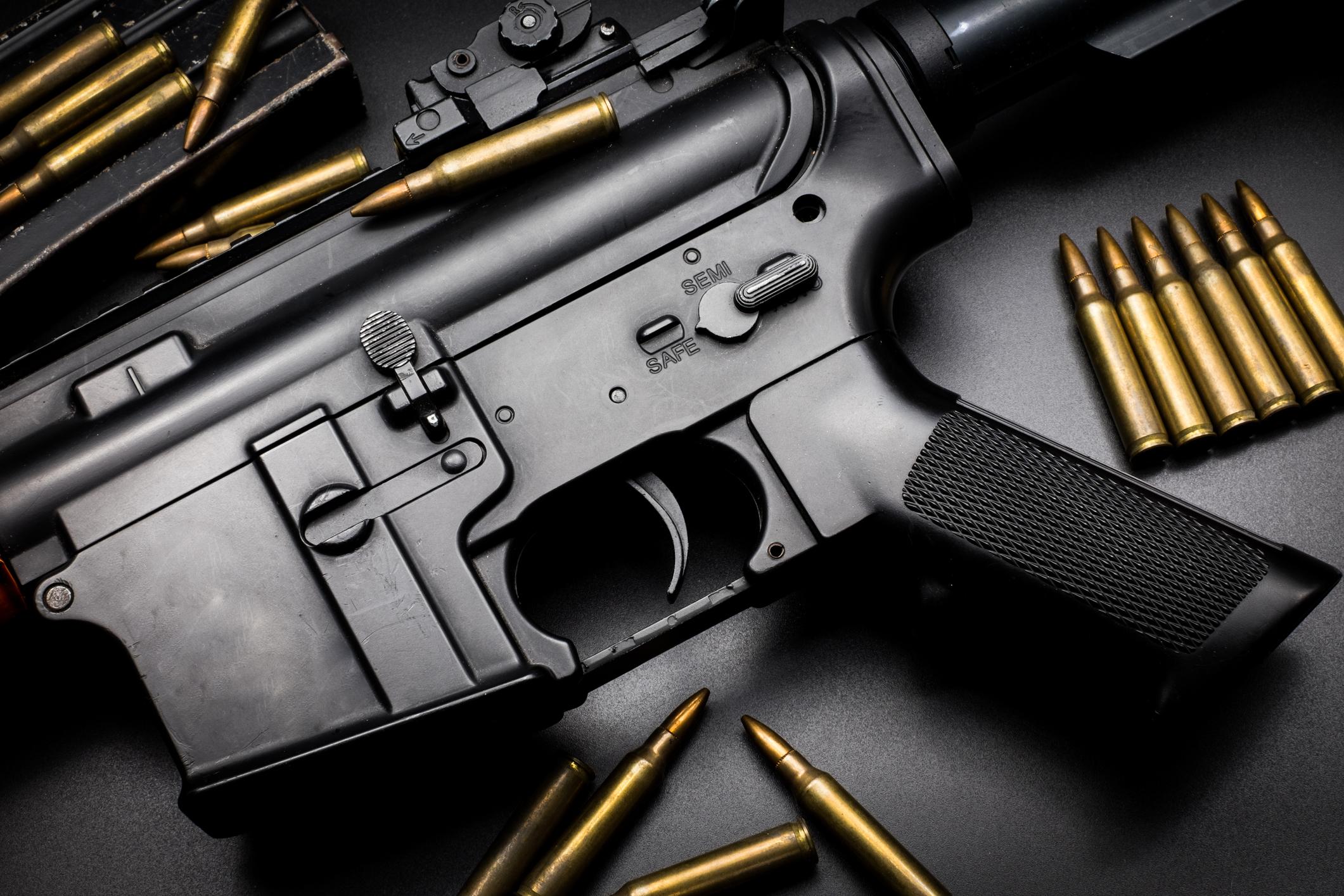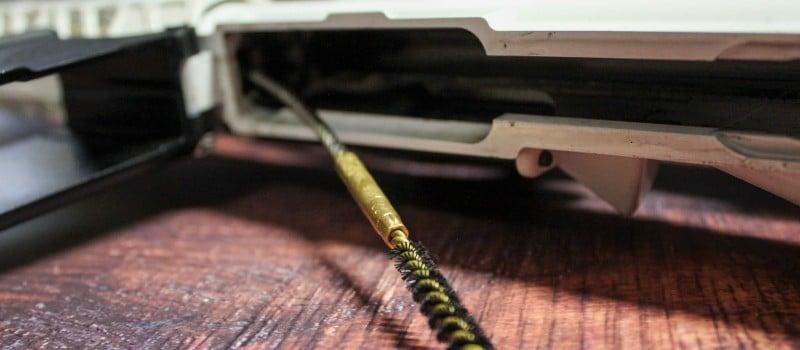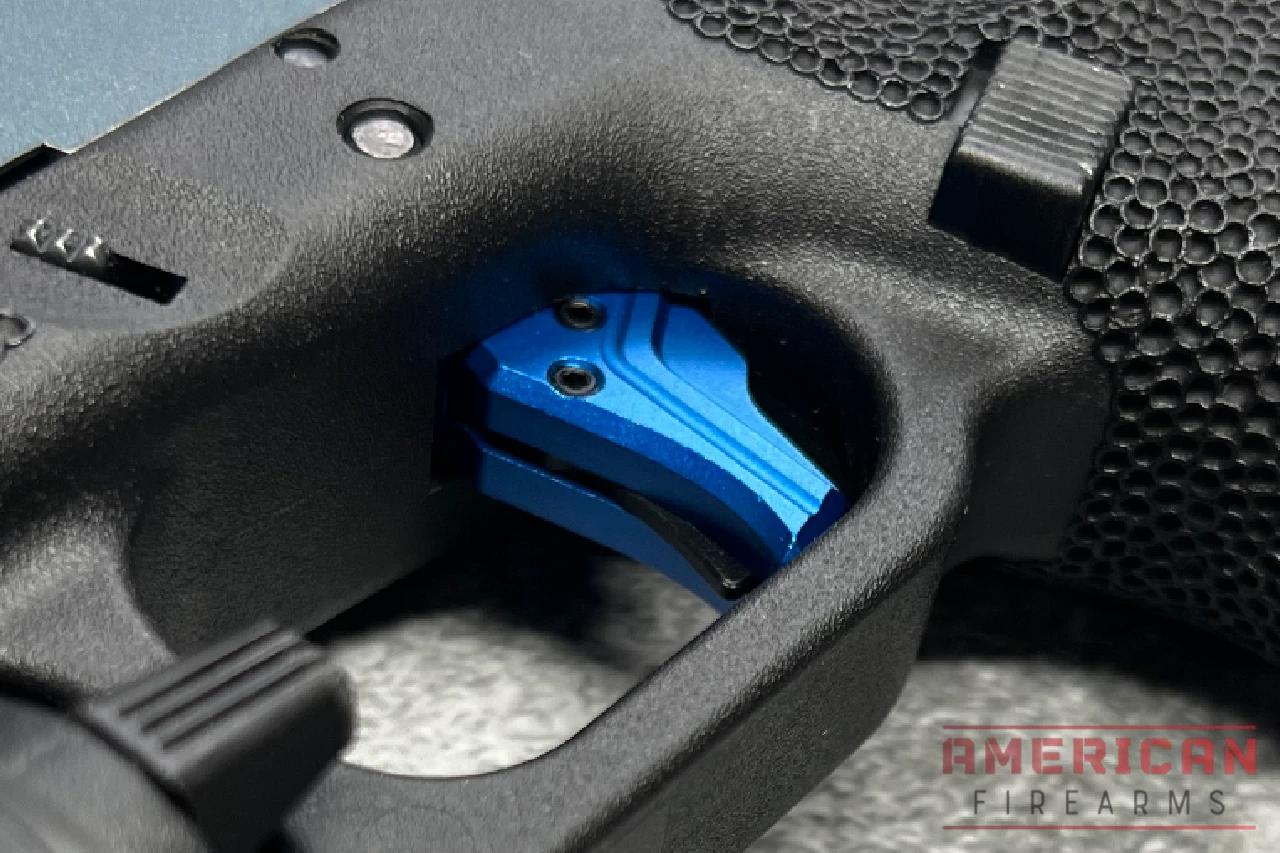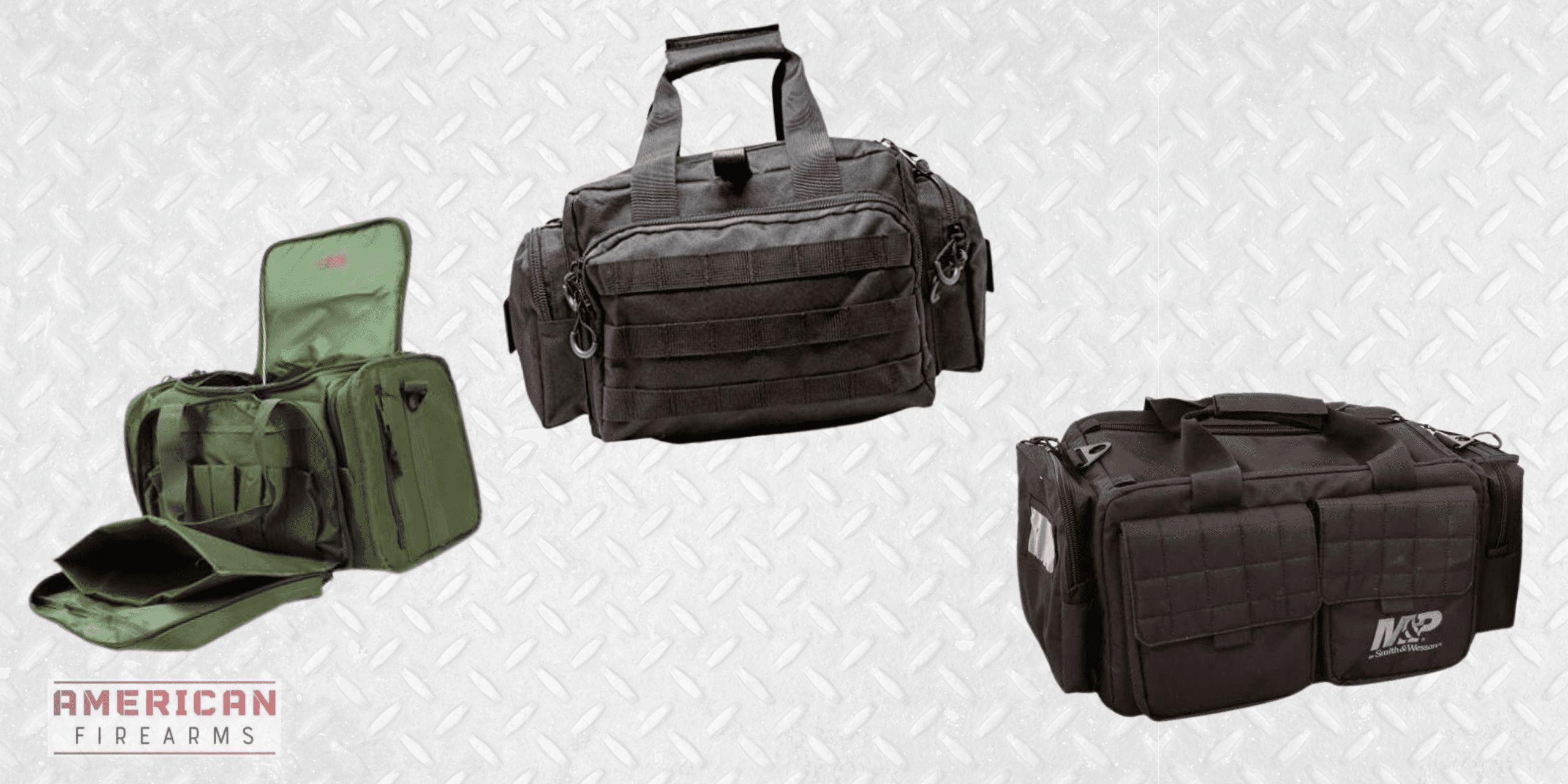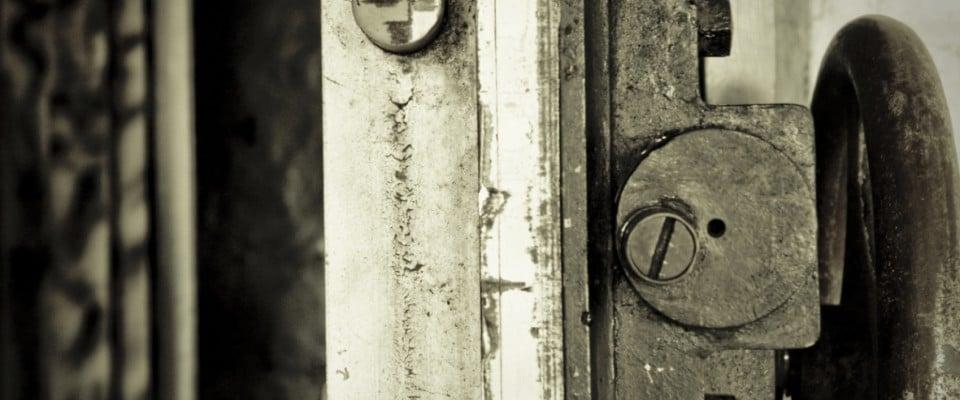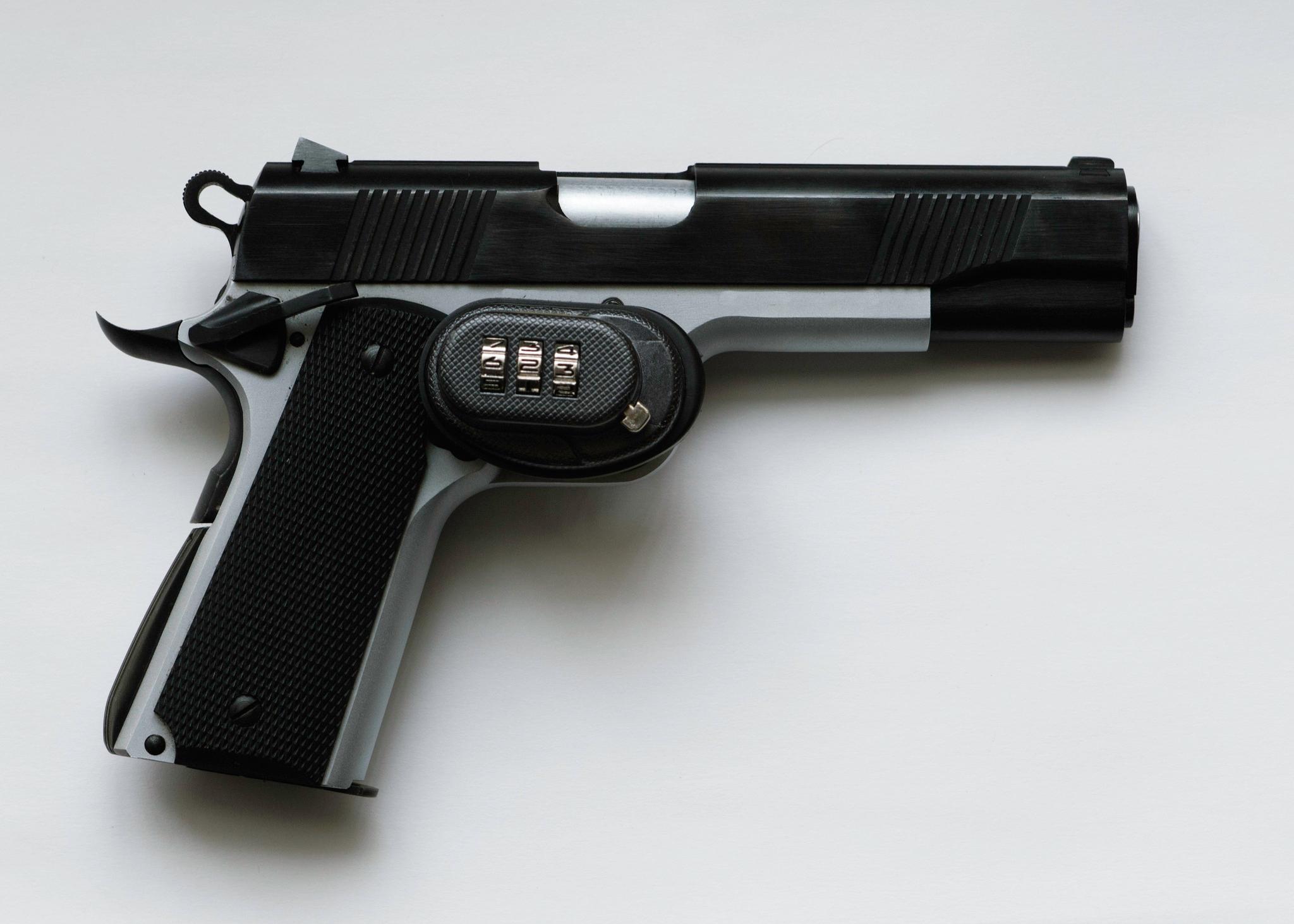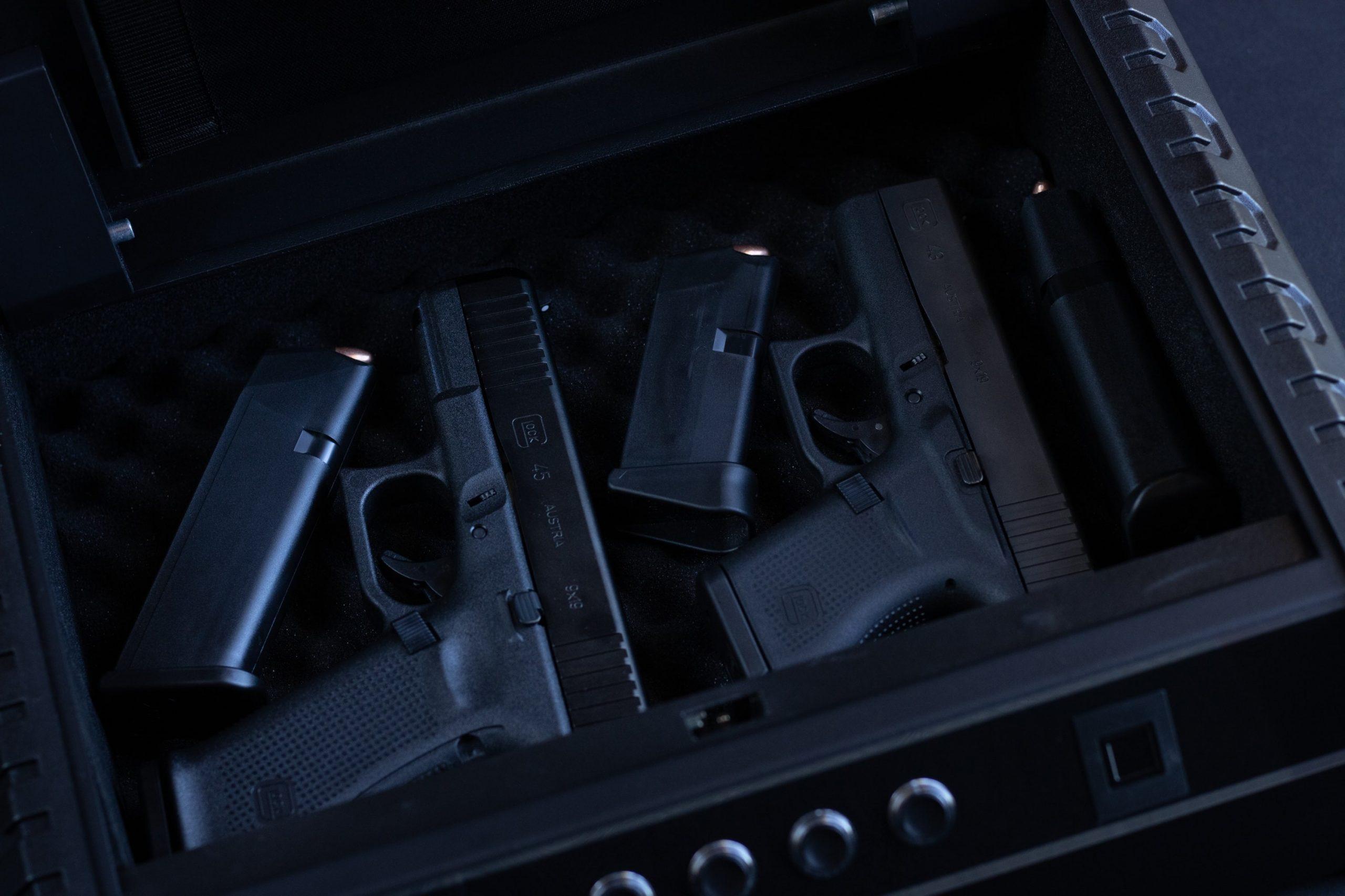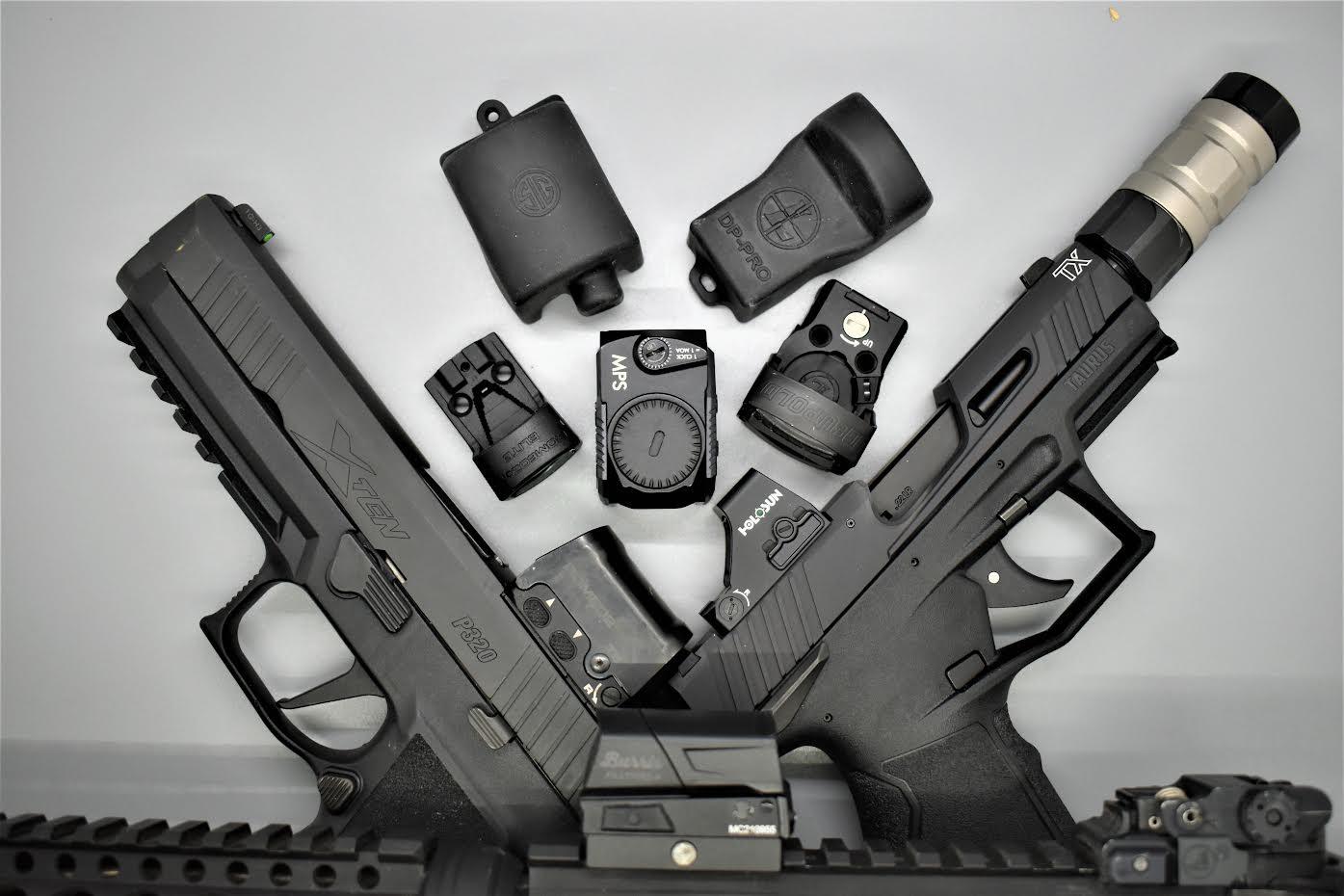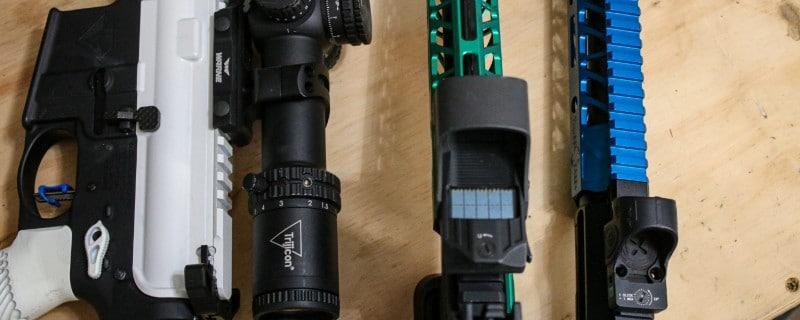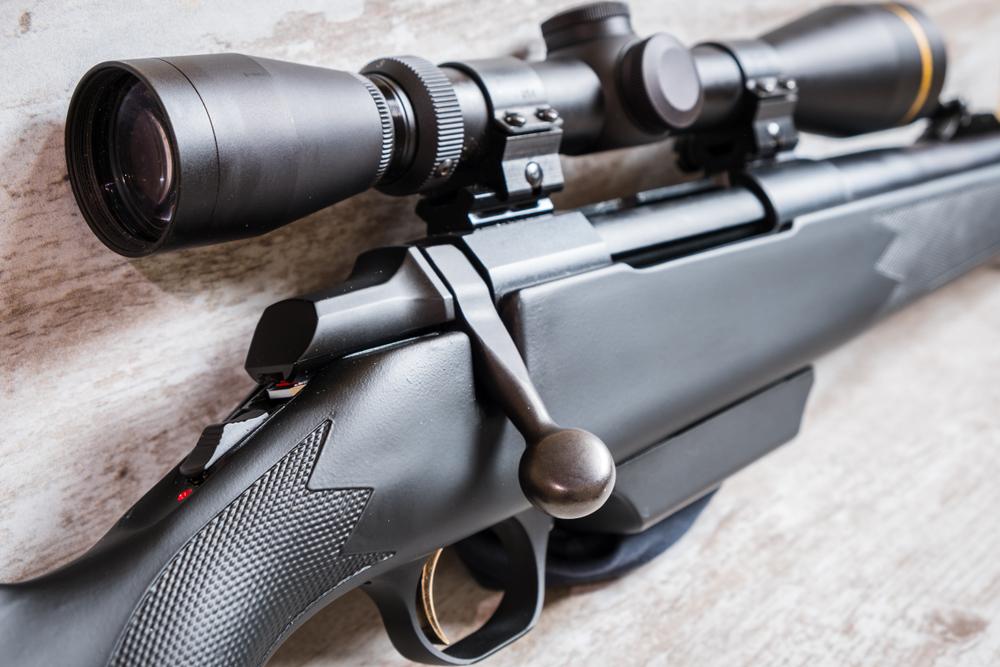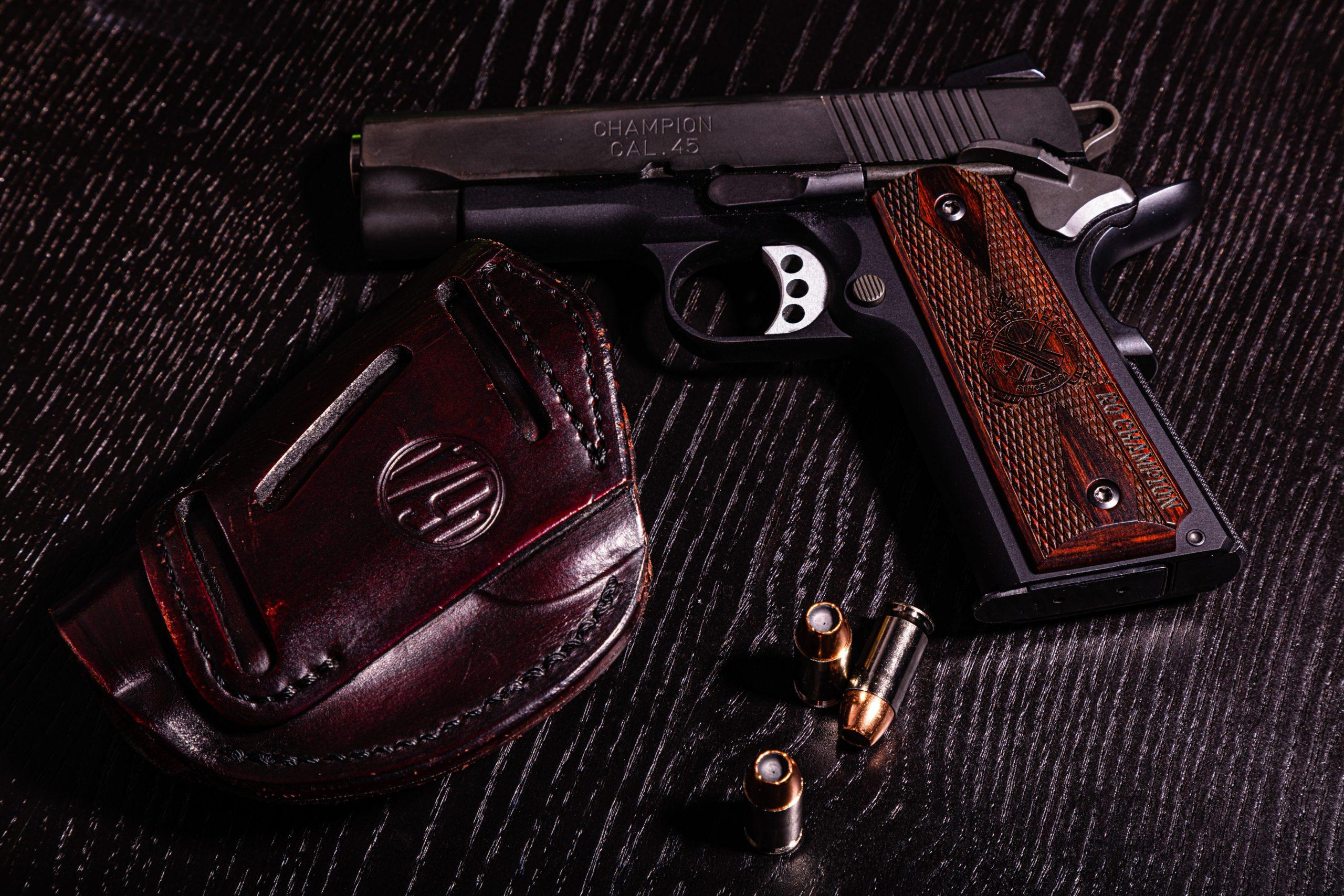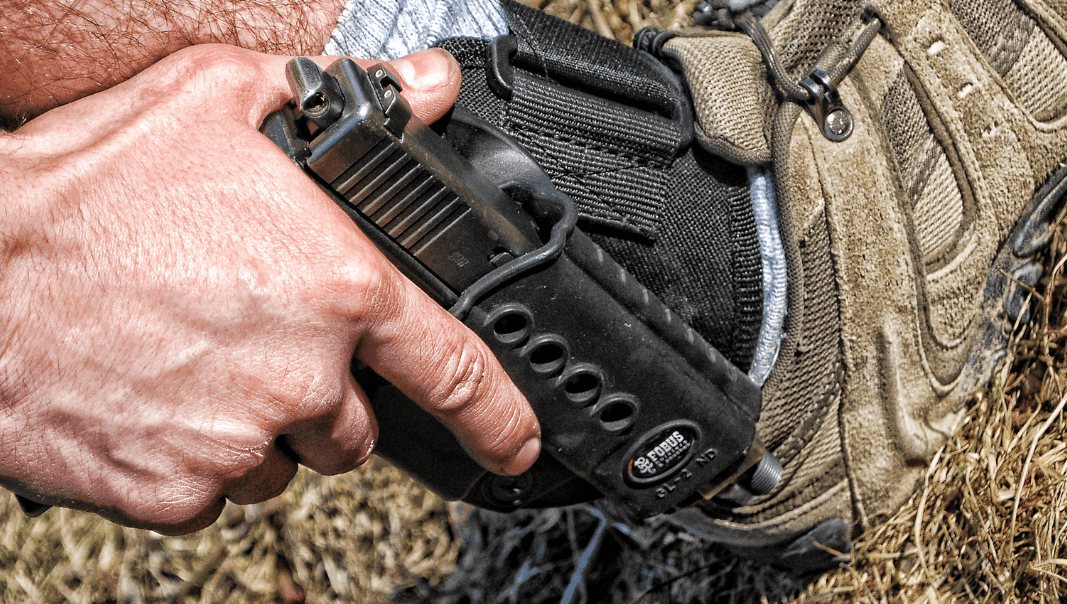Best Laser Bore Sights: Get On Target Faster!
Speed up zeroing, eliminate wasted ammo, and increase consistency. They work for rifles, pistols, & shotguns. Here are our top recommendations.
Written By
Michael Crites
Licensed Concealed Carry Holder
Reviewed by
Editorial Team
Learn About The Editorial Team
Share:
Products are selected by our editors. We may earn a commission on purchases from a link. How we select gear.

Updated
Jun 2025
Sighting in a rifle is a skill — one that takes time to develop — and one that can be made much easier with a few tools.
Boresighting is the process of aligning your sight with the axis of your gun’s bore. It’s a critical first step in sighting in your scope. It creates a starting point for you to sight in your gun, and the more accurate that initial boresight shot placement is the easier it is to get on zero.
It also saves time, ammunition, and some wear and tear on your shoulder.
Laser bore sights help save time and are a cost-effective way to get on target. They work for rifles, pistols, & shotguns. Here are our top recommendations. Our recommendations are based on real world experience with a variety of firearms. Let’s dive in!
In This Article
What Are Laser Bore Sights
A laser bore sight is a precision tool that projects a laser beam through or along your firearm’s barrel, showing you exactly where your bore is pointing at any given distance. Think of it as giving your gun a voice — instead of guessing where that first shot will land, the laser tells you where your barrel is aimed before you ever pull the trigger.
These ingenious devices come in three main varieties, each with their own strengths.
Cartridge-based bore sights are shaped exactly like ammunition for your specific caliber and chamber just like a regular round, providing the most accurate alignment since they sit precisely where a bullet would.
Barrel-insert bore sights use adjustable arbors that slide into your muzzle, offering universal compatibility across multiple calibers with a single device; just be careful not to damage the crown of your barrel during insertion.
Magnetic bore sights attach to the outside of your barrel with powerful magnets, making them the quickest to use and completely universal. There is also the mini laser boresight, a compact option designed for quick alignment and zeroing, especially for pistols and rifles.
Most laser bore sighters are designed to work with different firearms, including handguns, ARs, and scoped rifles, making them highly versatile tools for shooters. Some models feature all metal construction for increased durability, making them a reliable choice for repeated use.
The technology behind laser bore sights is super simple. There are Class IIIA red lasers and the more visible green variety, which eliminate the frustrating guesswork of traditional scope sighting. Some users prefer more power for better visibility at longer ranges.
Instead of removing your bolt and squinting down the barrel trying to eyeball the target center, you simply activate the laser, point it at your target, and adjust your scope or iron sights to match the dot. In direct sunlight, laser visibility can be challenging, but using a white paper target as a reflective surface can help you see the laser more clearly at distance.
This isn’t just convenience — it’s precision. A quality laser bore sight can get you pretty close to your intended point of impact at 100 yards (within a few inches) dramatically reducing the number of rounds needed to achieve a zero, though final adjustments are still necessary.
Whether you’re mounting a new scope on your hunting rifle, checking zero before the season, or ensuring your AR-15’s backup irons are properly aligned, a laser bore sight transforms what used to be a time-consuming, ammunition-burning chore into a quick, precise process.
How Laser Bore Sights Work
Understanding how laser bore sights function is pretty straightforward — they project a laser beam that shows you exactly where your bore is pointing, eliminating the guesswork from initial scope alignment.
The Basic Principle
A laser bore sight creates a visible representation of your barrel’s bore axis — the imaginary line running straight through the center of your barrel. When you fire a round, the bullet travels down this exact path before gravity and other factors take effect. By aligning your scope or iron sights with this laser dot, you’re creating a geometrically correct starting point for zeroing.
Laser Technology
Most bore sights use Class IIIA lasers under 5 milliwatts — the same as laser pointers. They produce either red light (632-650 nanometers) or green (532 nanometers). Your eyes are naturally more sensitive to green wavelengths, making green lasers significantly brighter and easier to see in daylight conditions.
How Different Types Achieve Alignment
Cartridge-based units offer the highest accuracy because they sit exactly where a live round would, using your firearm’s existing chamber tolerances. The laser emitter positions at the precise center of where the bullet would be.
Barrel-insert systems use graduated arbors to center the laser within your bore. Accuracy depends on how well the arbor centers itself in the barrel.
Magnetic systems attach to your muzzle exterior. Their precision relies on muzzle flatness and your ability to align the device with the bore centerline.
Important Limitations
Laser bore sights show where your bore points, but they can’t account for bullet drop, wind, or the physical offset between your bore and scope. The laser travels in a straight line while bullets follow a curved trajectory. This is why bore sighting gets you close, but live-fire confirmation remains essential for a proper zero.
Think of it as giving your rifle a voice before you pull the trigger.
Why Use A Laser Bore Sighter?
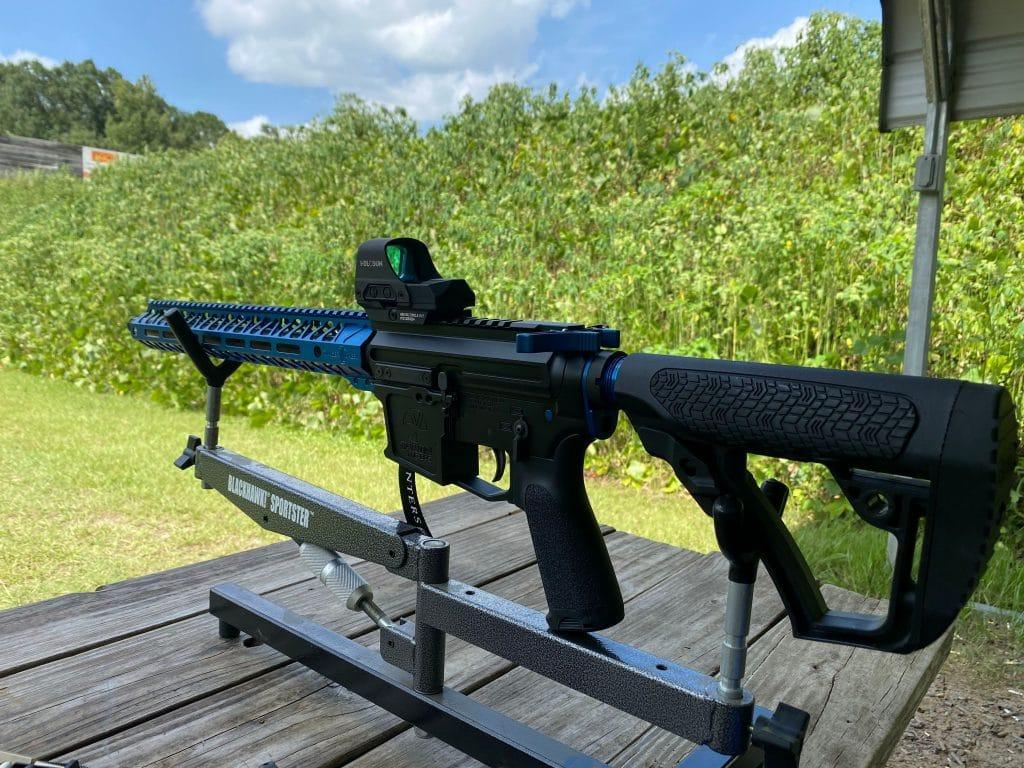
A laser bore sight, or more accurately, a laser bore sighter, projects a laser dot from either a module inserted into or mounted on the gun’s muzzle, or from a caliber-specific cartridge you insert into the chamber.
They’re available in rifles and pistol calibers, as well as for a variety of shotgun gauges, making them ideal for zeroing several rifles efficiently.
Once you mount or insert the boresight, you activate the laser and point the gun at your target. The point at which the dot appears aligns with your bore axis — from there, you zero the weapon, with hitting paper being the crucial first step in confirming your alignment.
Speeds up the Zeroing Process
A skilled shooter, with a spotter, can zero a rifle in just a few minutes. This is often true even for a single person operating alone, assuming the scope is roughly on target when mounted on the rifle.
If that’s not the case, zeroing can take substantially longer, where most of that time is spent looking for the first set of impacts, or simply guessing and adjusting until you get it right.
A laser bore sighter simplifies this process: put the visible laser on the center of the reticle at 100 yards or some other known distance, and you’re nearly done.
These tools are compatible with different firearms, making them versatile for shooters who own handguns, ARs, or scoped rifles. They are especially helpful when zeroing several rifles in one session, allowing you to quickly and accurately set up multiple guns with a single device.
After installing a new scope on your rifle, you’ll use a boresight to align the reticle with the projected dot at 25 or 50 yards. This gets you to the initial zero. You then remove the sight and shoot a group at 100 yards (or your desired zero distance) which should group within a few inches of one another.
Those of you familiar with the traditional bore sighting method of zeroing an AR at 25 yards (or 25 meters) for a 200-yard/200-meter zero will considerably cut down on set-up time with a laser sighter.
Not to mention zeroing faster will save on wasted rounds, which are about worth their weight in gold these days.
You can also use a laser bore sighter to check the alignment of pistol or shotgun sights, especially when installing new sights in a lateral (side-to-side) dovetail.
They’re useful tools for rifle scope installation and iron sight alignment, or for patterning a shotgun. The projected dot provides a clear reference to where the bore is aiming.
You get an idea of where the point of impact will be relative to the point of aim, which is impossible to eyeball.
A laser bore sighter also eliminates the need to remove your gun’s bolt, which is a nice time-saver as well.
Eliminates Wasted Ammunition
If you’re considering a laser bore sight, it’s because you want to shoot accurately.
To shoot accurately, you’d normally need to shoot several groups of five or more rounds to determine and fix your optic’s zero. These days, when each press of the trigger means, in some cases, several dollars going downrange, it can get expensive to zero a rifle.
This price consideration is especially important for folks who hunt for sustenance: each round you send downrange increases the total costs of hunting and providing meat for one’s family.
Using a laser bore sight decreases these costs by conserving ammunition.
Increased Consistency
For many of us, our hunting rifles stay in a safe or case for most of the year. Assuming it doesn’t get bumped or dropped, and the humidity has been constant, there’s no good reason that the rifle ought to change zero over time.
However, before heading out hunting, it’s wise to reinsert the boresight and double-check the rifle’s zero. This precaution might prevent missed shots on the first day of the hunting season.
Types of Laser Bore Sights
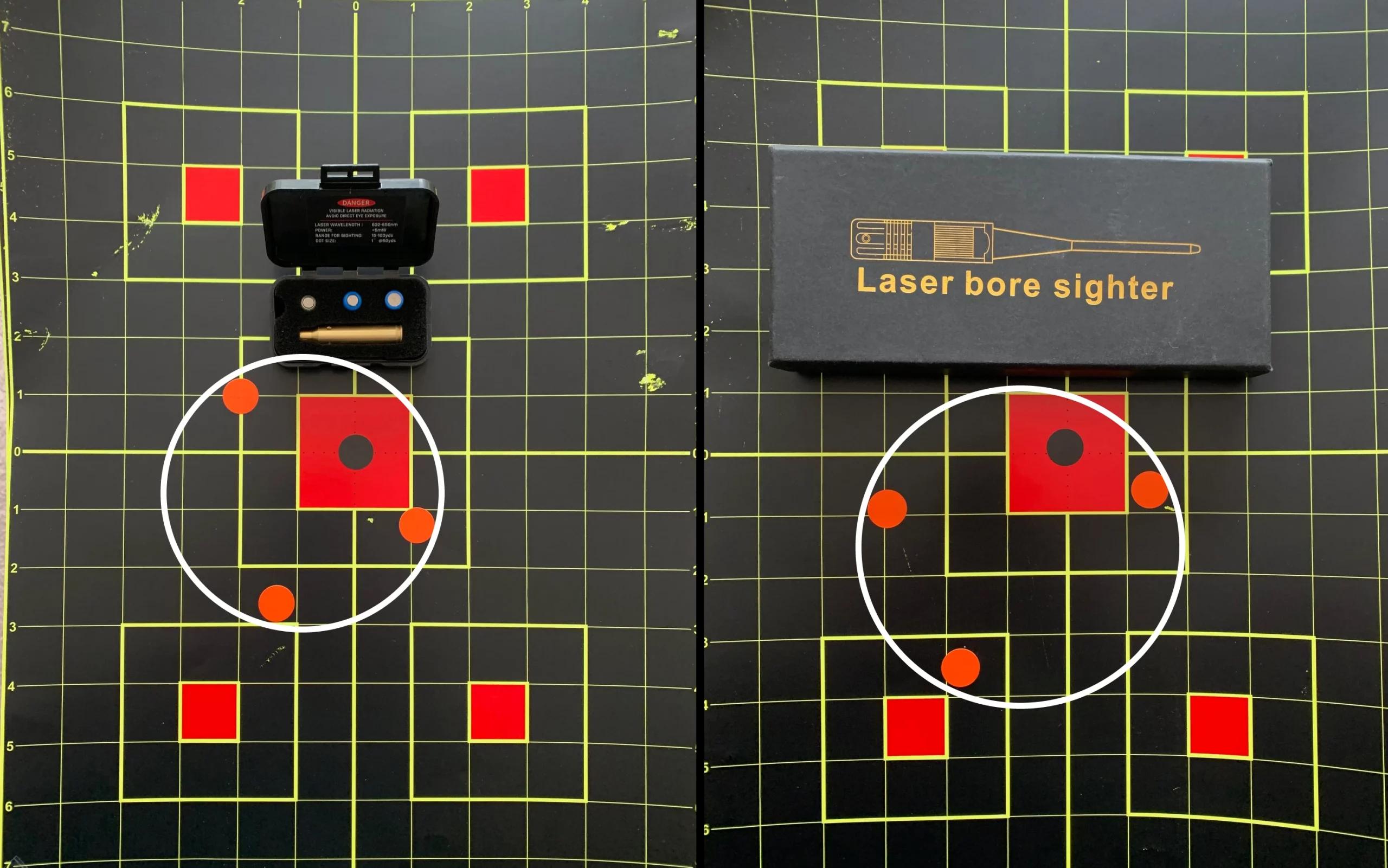
The ideal laser bore sighter largely depends on your needs and the specifications of the laser.
You’ll need to determine if you’d prefer a universal model — one that works with a variety of firearm calibers by sliding into or attaching to the end of the barrel — or a boresight designed for a specific caliber.
Barrel-Inserts
Many laser bore sighters are universal: these have a laser module on the chamber end and a body that tapers down to a fine point. To use these, you’ll likely have a series of different arbors — ranging from .22 LR up to .410 Gauge.
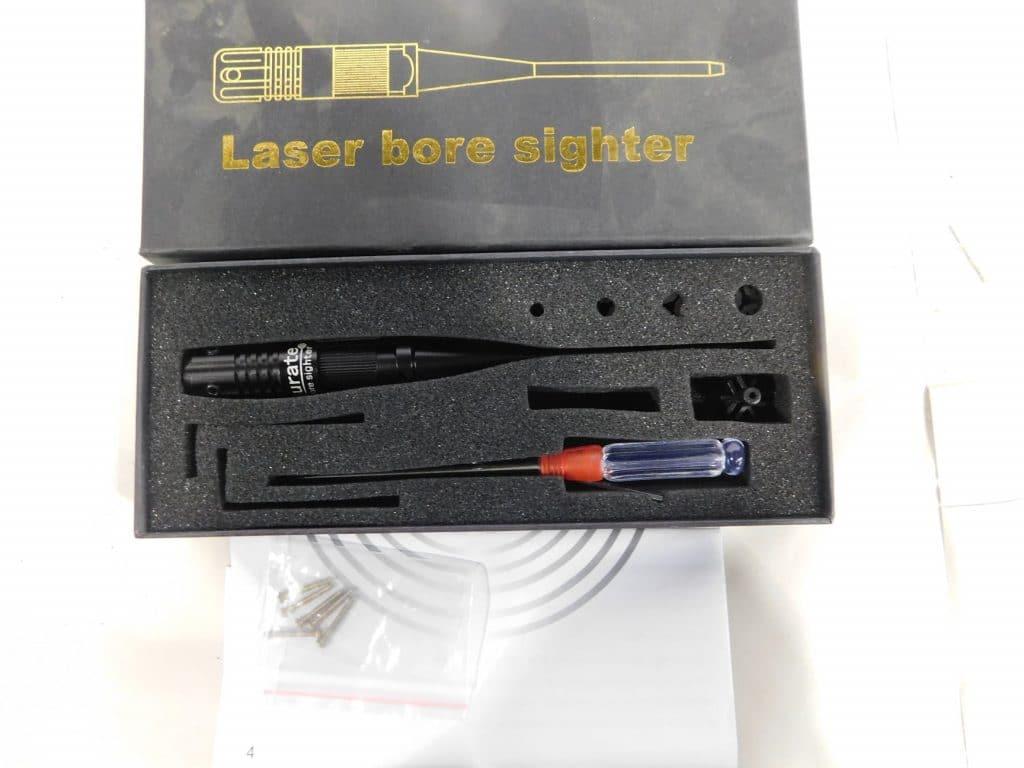
You select the arbor that fits your rifle’s bore and feed the insert into the barrel.
The barrel-insertion boresights are essentially dongles on a rod — each with a progressively larger diameter that helps keep the sighter centered with the barrel bore.
The fit with these might not be as precise as the caliber-specific boresighters, but they make it easy to pack everything you’ll need for various calibers in a single package, can be pretty inexpensive, and often have more powerful lasers than cartridge-based options.
Cartridge-Based
A lot of laser bore sights are made in the exact size and shape of the caliber rifle, helping them get perfectly aligned with the chamber.
To use these, you load them in the same way that you’d load a cartridge: this means that the tip of the sight should be exactly in line with the bore.
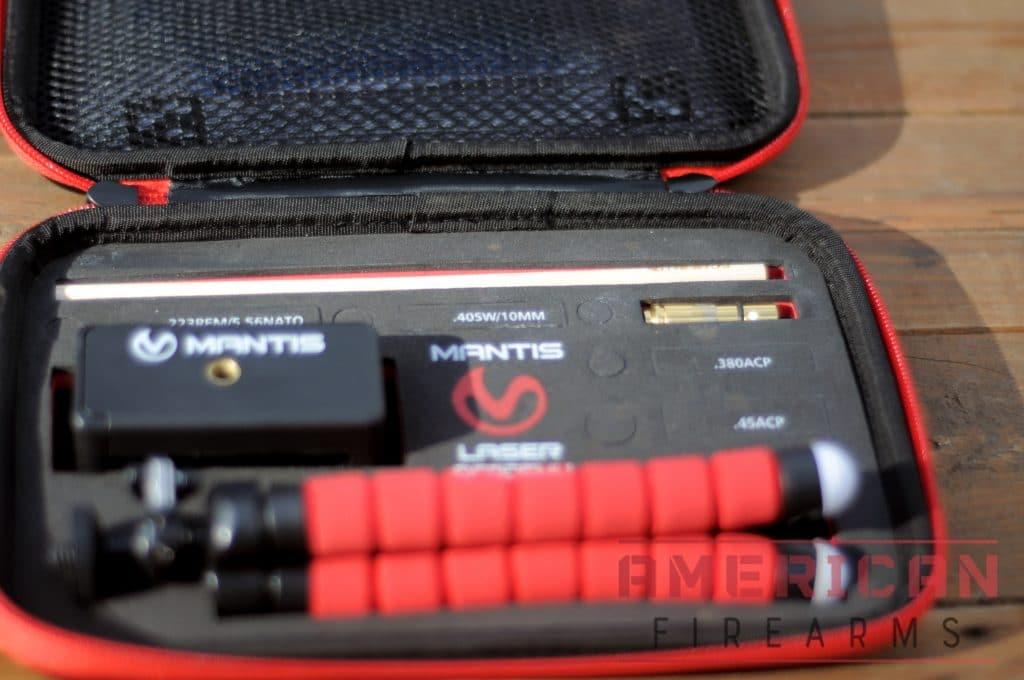
To zero, then, all you have to do is set your reticle in the same place as the dot on the target. If you’re dealing with longer ranges, you might also need to adjust for bullet drop, but this can also be done with different kinds of reticles as well.
A cartridge-based laser boresight is similar to dry-fire training lasers. They are inserted into the chamber of your firearm which, once the action is closed, creates a tight fit between the cartridge and barrel, eliminating play between the two and providing a reliably accurate laser placement.
Cartridge-type bore sights are the more compact of the two and typically aren’t much more expensive.
They are, however, caliber-specific, so you’ll need one for every caliber of firearm you own (luckily, these are often available in sets that cover popular calibers from .22 LR to .45 ACP and larger.)
While these are the most precise, the downside here is that they are cartridge-specific: for each caliber of rifle that you have, you’ll have to get another one.
This can dramatically change the budget calculus for these, and it’s something more than worth keeping in mind as you shop for a laser bore sight. They can also have less powerful lasers, owing to their small size.
Magnetic
A third option is a magnetic boresight, which uses very strong magnets to provide a tight connection to the firearm.
These are the easiest to use of all of the products we mention here as magnets affix to the end of the barrel. These may not be the most accurate as they depend on you mounting them exactly in line with the bore with the magnet, but they are quick and easy to use — plus they will work with multiple firearms.
Also, since these don’t take up the chamber, make absolutely sure that the chamber is clear to avoid an accident.
If you are sure, check again, then one more time.
These tend to be the most expensive option, but given the price point tend to be well-engineered and solidly durable.
They’re also universal, so one bore sighter to rule them all, if you will.
Batteries
The one universal consideration is batteries and their resulting battery life. Ensuring your bore sight uses commonly-available batteries will avoid headaches down the line.
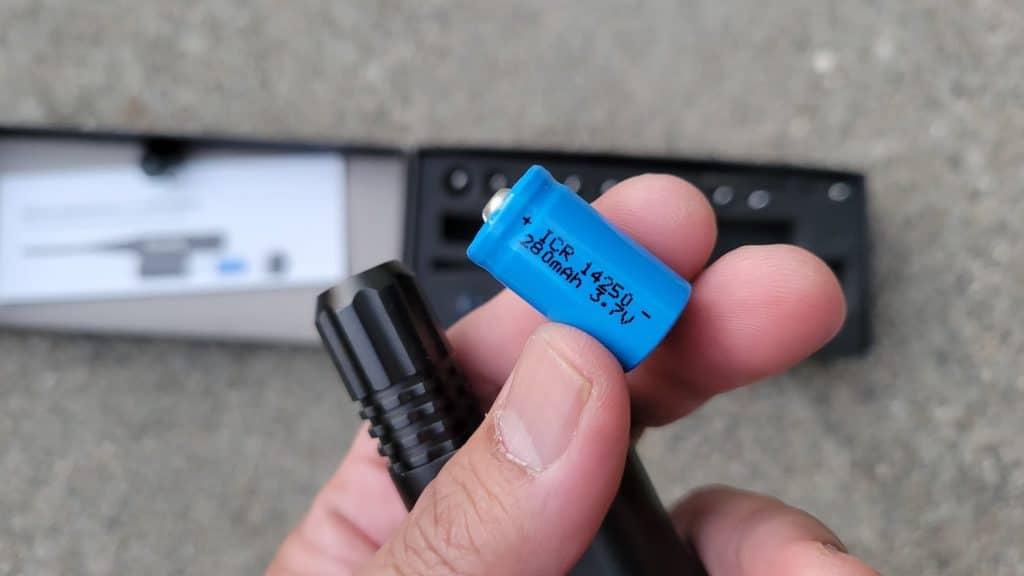
Many of these are also available in multiple colors, so be it a green laser or red laser, you’ll generally have your choice between the two — each with the same battery life.
How To Choose A Laser Bore Sight
Selecting the right laser bore sight isn’t rocket science, but getting it wrong can turn what should be a simple zeroing session into an exercise in frustration. The key is matching the tool to your specific needs, firearms, and shooting style.
1. Brightness and Visibility Range
A bore sight you can’t see is worse than useless. Most units work well indoors or in low light, but outdoor use in bright sunlight separates the wheat from the chaff. Look for units rated for at least 50-100 yards of visibility in daylight conditions.
Reflective targets can extend the useful range of any laser bore sight, but starting with a bright, tight beam gives you more flexibility in where and when you can use it.
The bottom line: match the tool to your needs, don’t cheap out on build quality, and remember that the best bore sight is the one you’ll actually use consistently.
A spare battery is also a good idea to have in your range bag next to the sight.
2. Accuracy Depends on Fit
The best and most accurate bore sights are cartridge-based units that chamber exactly like ammunition. Since they sit precisely where a bullet would, with the same headspace and alignment, they provide the tightest tolerances and most reliable results. The downside? You need one for every caliber you shoot.
Universal arbor-style bore sights offer good accuracy with proper setup, but they require more attention to ensure the arbor is centered and secure. Magnetic bore sights are the most convenient but potentially the least precise, since their accuracy depends entirely on how well you align them with the bore axis.
3. Determine Your Use Case
Are you a hunter with a single bolt-action rifle that gets scoped once a season? A cartridge-based bore sight specific to your caliber is probably your best bet. Have a safe full of multiple firearms in different calibers? A universal arbor-style kit or magnetic bore sight starts making more sense from both convenience and cost perspectives.
If you’re the type who’s constantly swapping optics, upgrading scopes, or helping buddies zero their rifles, investing in a higher-end universal system pays dividends in time saved and ammunition conserved.
4. Laser Color Matters More Than You Think
The age-old red versus green laser debate isn’t just about preference — it’s about physics and your eyes. Human vision is naturally more sensitive to green light, making green lasers significantly easier to see in bright conditions and at longer distances. If you’re doing most of your bore sighting outdoors or at longer ranges, green is worth the extra cost.
That said, red lasers are perfectly adequate for indoor use or shorter distances, and they’re easier on your wallet. They also tend to have better battery life since they require less power to operate.
5. Battery Life and Availability
Nothing kills a range session faster than a dead bore sight. Look for units that use common batteries like CR123, AAA, or button cells you can find at any convenience store. Avoid proprietary battery systems or obscure sizes that’ll leave you stranded.
Battery life varies wildly between models. Cartridge-based units often lack on/off switches, meaning they’re always drawing power when assembled. Universal and magnetic units typically offer better power management with dedicated switches.
Comparison of Laser Bore Sighters
Below is my list of the best laser bore sights. I list the best choices in terms of value, performance, design, and cost.
Click on the name to head to the product page, read reviews and check prices or skip ahead to the list of bore sights.
| Name | Style | Price |
|---|---|---|
Magnetic | $97 | |
Cartridge | $60 | |
Muzzle Insert | $51 | |
Cartridge | $12 | |
Cartridge | $59 | |
Insert Kit | $93 | |
Insert | $99 |
How We Picked
Accuracy
We evaluate the accuracy of different styles of laser bore sights by testing how close its projected laser beam is at 50 yards to actual shot placement.
Ease of Use
We evaluate how easy it is to use the laser bore sight by assessing its setup process, battery life, and whether or not it fits well into different types and calibers of firearms.
Compatibility
We assess the compatibility of the laser bore sight by testing it with a variety of firearms and calibers, generally a 5.56 NATO AR, 9mm PCC, and .22LR rifle.
Durability
We assess the quality of the materials used in the bore sight’s construction, including the housing, laser, and batteries.
More on our testing process
Product Reviews
1. Best Magnetic Option: Wheeler Professional
undefined
Accuracy:
Ease of Use:
Compatibility:
Durability:
Wheeler is a household name in gunsmithing, we love their toolsets and wrenches, and their Professional Laser Bore Sighter is as good as they get. It’s also, in keeping with Wheeler’s focus on quality, one of the most expensive. It’s a magnetic bore sighter, which enables it to work for any caliber, but has some nuances.
Ease of Use
The Wheeler Bore Sight is available in either red or bright green laser. Their prices differ slightly: at the time of print, the red costs $75, while the green is priced at $115.
The Wheeler Professional Bore Sight has a rugged aluminum body and operates a little differently from other laser sights. This laser bore sight works by connecting to the muzzle with a strong magnetic connection, so there are no arbors or o-rings to fiddle with.
The magnet attachment mechanism, however, means it won’t work with pronged or non-flat muzzle devices. Most of my rifles use a standard A2 flash hider, so it wasn’t an issue for me.
There’s a switch on the housing that you simply push to activate the laser. It’s powered by a CR123 battery, which is a little harder to find than a standard AAA or CR2032, but being lithium-based, it’s far superior to an alkaline.
Accuracy
The magnet is strong. With careful alignment using the supplied reflective target, it’s easy to get on paper at 25 yards and align both red dots and optic crosshairs.
Like any bore sight, using a rest will dramatically improve the results.
The Wheeler Laser Bore Sighter uses a Class III laser, which is a typical low-power laser common in many laser pointers. There’s little danger, except for the potential to flash-blind someone within 530 feet.
As with any laser, exercise caution. There’s no dimmer so you can’t dim it for in-house use, either.
Pros:
- Super easy to use
- Universal — no arbors or o-rings to fiddle with
- Really high-quality product
Cons:
- Won’t adhere to non-flat muzzle devices
- No dimmer for indoor use
2. Best Cartridge Kit: StrongTools
undefined
Accuracy:
Ease of Use:
Compatibility:
Durability:
The Laser Bore Sighter Kit from StrongTools is a set of cartridge-variety bore sighters, so rather than buy a single caliber-specific bore sighter you’ll get a selection of 7 boresights from 5.56/.223, 9MM, 7.62X39MM, 30-30WIN, 30-06/.25-06/270, 243/308WIN/7MM-08REM, and 45 Colt.
Accuracy Test Results
After putting the included batteries into the .223 cartridge and spinning the bottom on the cartridge onto the body of the unit, I slid the bore sighter into my PSA PA-15 with a previously zeroed Vortex Strike Eagle, and leveled it out in my BOG Deathgrip tripod. I then sighted into the bullseye on a Splatterburst 12×18 target to see where the laser landed, then ejected (via the charging handle) and replaced the bore sighter two more times to get at the average spread.
These cartridge-based bore sighers are generally, at least in my experience, more accurate than the insert/universal type because they have tighter tolerances (they literally have to be chambered), and this was my experience with the StrongTools unit. It was consistently within 2-3 inches of the bullseye, with 4 inches of spread between the various tests.
The downside was the laser wasn’t quite as visible outdoors and was practically invisible beyond 50 yards.
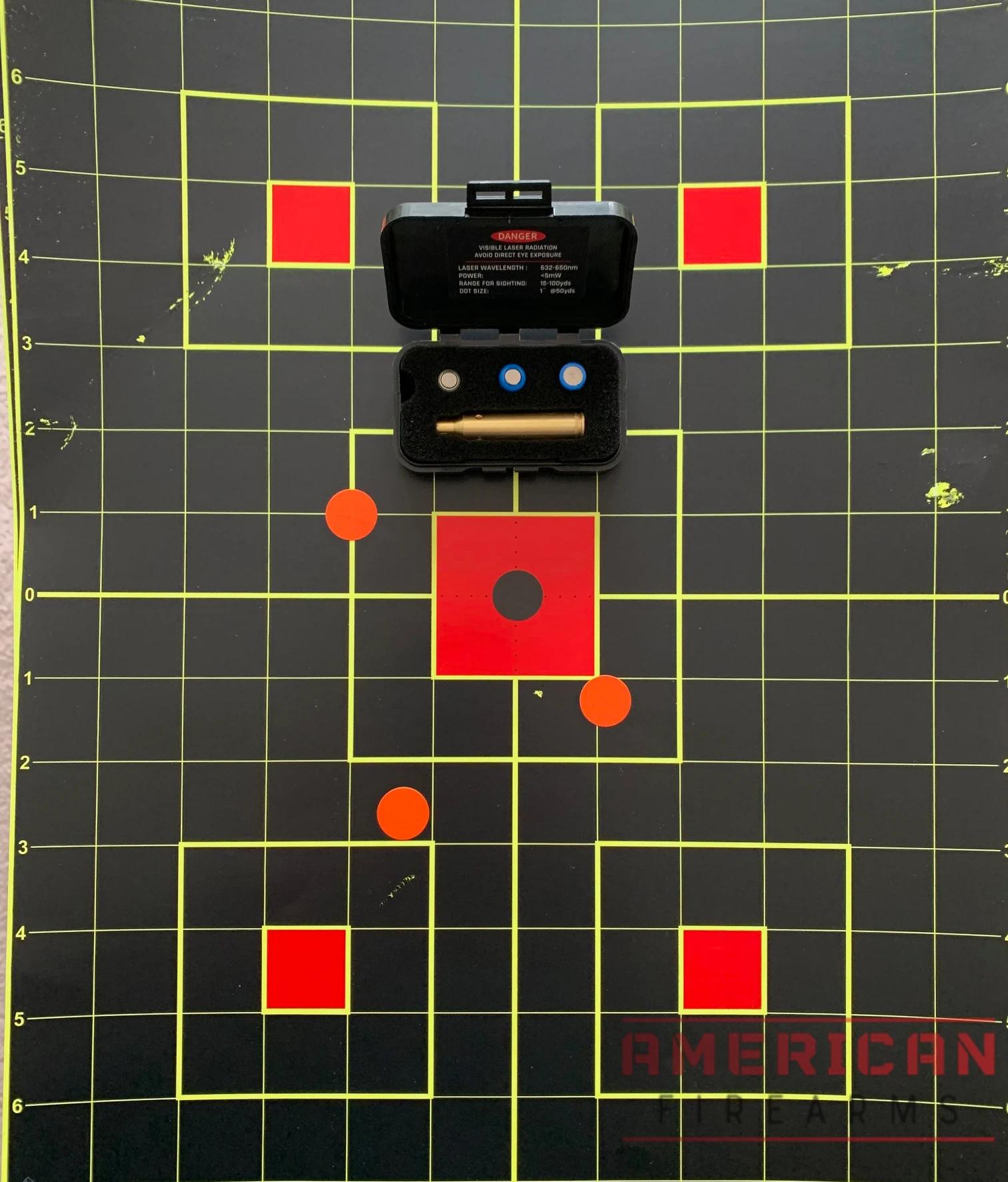
These are brass cartridges that use a threaded cap to cover the battery. Screw the cap in partially to turn it on, all the way in to turn it off. It will insert in the chamber, but you may or may not be able to close the bolt. That said, you can seat the cartridge, and release the bolt slowly to apply pressure to the sighter. They will keep handguns out-of-battery, backing the slide out around a 1/2 inch.
These aren’t intended for dry-firing practice as there’s no rubber primer to protect your firing pin from wear.
Pros:
- Heavy duty construction
- Easy to use
- More accurate than insert-based sighters
- Good price
- Laser is bright
- Helps with sighting in new scopes
- Covers multiple calibers
Cons:
- No on-off switch
- Included batteries are cheap
- Potential confusion over caliber compatibility (e.g., .45 Colt vs. .45 ACP)
3. Best Universal Option: LaserLyte
undefined
Accuracy:
Ease of Use:
Compatibility:
Durability:
I am generally pretty cheap, so I look for systems and tools that work with anything.
The LaserLyre Universal Bore Sight Kit is a total sighting-in toolset featuring the bore sighter, adapters for multiple calibers – it works for rifle calibers from .223 to .50 BMG, as well as 20 and 12-gauge shotguns – and even a scope leveling tool for proper installation.
The Laserlyte Laser Bore Sight is the plastic rod type, which you insert into the muzzle of the firearm you want to sight in.
You then screw in the correct adapter sleeve for the caliber of firearm you’re zeroing, and with a little trial and error, you can get close to a fully zeroed scope relatively quickly.
Accuracy Test Results
I again tested getting on paper at 20 yards with the LASERLYTE bore sighter. After selecting the correct bore arbor, I slid it into the barrel of my PSA PA-15 and leveled it out in my BOG Deathgrip tripod.
I then sighted into the bullseye on the same Splatterburst 12×18 target to see where the laser landed, then removed and reseated the bore sighter two more times to get at the average spread.
The laser was consistently within 3-4 inches of the bullseye, with 6 inches of spread between the various tests.
Not bad, but more spread than I usually get with the cartridge-style bore fighters. The laser was tight and easy to see both indoors and outside, at 20 and 50 yards.
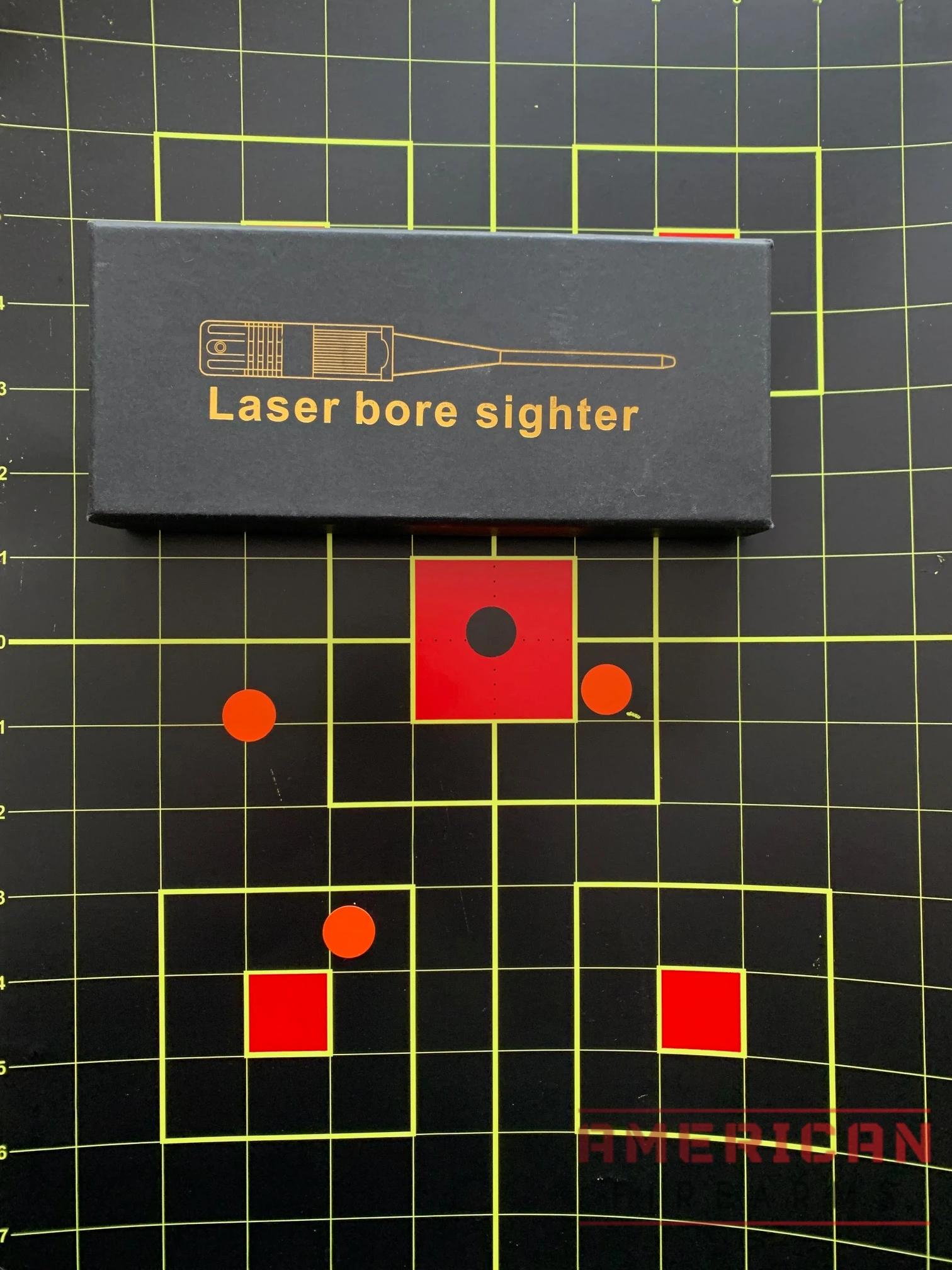
Ease of Use
I have found these muzzle insertion-style bore sighters to be pretty finicky. However, since upgrading to a magnetic style, I haven’t looked back.
That said, these can be had for half the price, and some of my shooting buddies swear by a simple universal laser bore sight like these.
These arbor-based designs can have issues with malfunctioning lasers (the buttons on mine always stick and can be hard to activate) and arbor screws coming loose/not creating an adequate seal in the barrel.
It comes in a convenient carrying case, along with 3 393 batteries, again a common miniature. The price of entry is $65, but it’s a versatile enough tool to justify the spend.
Pros:
- Accurate
- Easy to Use
- Lots of Caliber Fits
- Affordable
Cons:
- Durability Issues
- Can be ineffective for some users
4. Best 9mm Bore Sight: CVLife
undefined
Accuracy:
Ease of Use:
Compatibility:
Durability:
The CVLIFE Bore Sight series series resembles many other budget-focused brands made specifically for Amazon. You won’t find these in traditional outdoor retailers.
CVLIFE makes a lot of outdoor products, and while not American-made, many of their products are a good fit for budget-minded folks.
The CVLIFE Bore Sight is similar to the StrongTools products above — they use a brass housing paired with a threaded end cap which activates and deactivates the laser by screwing in to complete the circuit.
The red laser is billed to up to 100 yards of visibility and as with any laser sight will work best with a reflective target.
You’ll need to purchase the specific caliber of your firearm, but the good news is they go for as little as $12 each, so no need for a second mortgage if you need more than one.
Pros:
- Accurate
- Easy to use
Cons:
- Not particularly durable
5. Sitemark .223 Boresight
undefined
Accuracy:
Ease of Use:
Compatibility:
Durability:
The Sitemark .223 boresight is an example of a cartridge-shaped boresight in one of the most common AR calibers today.
A note before we begin: this should work just fine in any firearm that chambers .223 or 5.56mm NATO. While the cartridges are dimensionally the same and differ in pressures, only the dimensions matter here since you’re not firing a round.
Using one of these is simple: all you have to do is make sure there’s a battery (one is included) in the boresight, load it into the chamber, and then zero the rifle to your dot. If you find that the cartridge doesn’t sit perfectly in the chamber, there are also adjustment screws that you can use to make sure that the sight is perfectly aligned with the bore, but chances are you won’t even have to do this.
It also comes paired with a .308 boresight and a handy carrying case, so we think this would be great for someone with an AR to simply keep in their range bag.
6. Bushnell Boresighter
undefined
Accuracy:
Ease of Use:
Compatibility:
Durability:
Besides single-caliber options, we also recommend that people with multiple firearms consider kits like this kit from Bushnell.
This bore sighter is relatively simple to use: you put the appropriately sized rod into the muzzle (please make sure the firearm is unloaded) when it’s attached to the sighter itself.
Ease of Use
The sighter, which sits on top of the barrel, then gives you, in effect, a target with several markings on it that you use to zero your scope before shooting it to confirm the zero. The kit comes with the rods you need to sight in everything from .22 to 45. Caliber.I like these kits for people who have more than one firearm, as buying a large set of different cartridge-style boresights is likely to cost more than a kit like this one. The carrying case and included instructions are also handy and should help you both to keep everything organized, and also to get your guns shooting on paper in a hurry, although for whatever reason the Bushness tended to bias low.
The boresight might be a little bit too high over the bore to use with iron sights, though, so this is likely better for people who plan on dialing in optical sights as opposed to iron sights.
Pros:
- Helps to sight in rifles accurately and quickly
- Easy to use
Cons:
- Can shoot low after use
- Not compatible with raised scopes
7. SiteLite Ultra Mag
undefined
Accuracy:
Ease of Use:
Compatibility:
Durability:
Taking the same general concept of a boresight to its highest degree, you have the SiteLite Ultra Mag. This works by attaching the appropriate rod and then, like the Bushnell before it, inserting the apparatus into the bore.
Where this differs is that instead of an optical sight, this uses an extremely bright green laser. You then point it at a safe object to dial in your sight.
Ease of Use
We like this design for a few major reasons. First, the overall concept is simple, even without the included instructional materials.
Then, the fact that the laser is green as opposed to red makes it a lot easier to use for folks who have astigmatism, which makes red lasers look like splotches as opposed to dots.
It’s also easier to switch between calibers using quality O-rings and barrel inserts. However, matching the o-rings to a specific caliber can be challenging.
There are printed instructions but color-coding or some more legible system would be an improvement.
Additionally, the software requires users to enter a significant amount of information, including the type of firearm (pistol, rifle, or shotgun), caliber, sight height, bullet weight, bullet shape, velocity, zeroed range, and target range.
Needless to say, this may be cumbersome for folks who just want to zero rifle.
Durability
Quality-wise, this one is tough to beat, and apparently, it has been adopted by both the Navy and the Marine Corps for sighting in various kinds of weapon systems.
In our assessment, the magnets inside the bore sighter are not as strong as advertised and are useless on stainless steel barrels.
When it comes to most types of kits, if they’re good enough for the armed forces, they’re certainly good enough for us. We’d recommend this to someone who has to sight in weapons often or simply wants the best boresight they can find.
Pros:
- Easy to get on the paper
- Wide compatibility
- Magnet is easy to use
Cons:
- Magnets aren’t particularly strong
- O-rings storage and identification system needs improvement.
- Cumbersome software
- Blow-molded plastic case is cheap
- Unknown country of manufacturer
Calibration and Maintenance
Routine Calibration Steps
Calibrating your laser bore sight is a straightforward process that ensures your sights and bore are perfectly aligned. Here’s how to do it:
- Safety First: Always make sure your firearm is completely unloaded and safe to handle before starting any calibration.
- Install the Bore Sight: Depending on your model, either insert the laser bore sight into the chamber (for cartridge-based units) or attach it to the muzzle (for insert or magnetic styles).
- Align the Laser Dot: Aim your firearm at a target—using a reflective target insert can make the laser dot easier to see, especially in bright conditions.
- Adjust Your Sights: Look through your scope or iron sights and make minimal adjustments until your reticle or sight picture aligns with the laser dot on the target.
- Verify Calibration: Remove the bore sight, load a single round, and fire a shot at the target. Check the point of impact to confirm your sights are properly aligned. If needed, repeat the process for fine-tuning.
By following these steps, you’ll ensure your laser bore sight provides accurate, repeatable results every time you use it.
Cleaning and Storage Tips
Proper care extends the life of your laser bore sight and keeps it performing at its best:
- Regular Cleaning: Wipe down your laser bore sight after each use to remove dirt, powder residue, or debris that could affect the laser’s performance or fit in the bore.
- Protective Storage: Store your bore sight in a padded case or your range bag to prevent scratches, dents, or other damage during transport.
- Avoid Extreme Conditions: Keep your laser bore sight away from excessive heat, cold, or moisture, as these can damage the electronics and reduce battery life.
- Battery Maintenance: Check the battery life regularly and replace batteries as needed to ensure your laser is always bright and ready for use.
A little routine maintenance goes a long way in keeping your bore sight reliable and ready for your next range session.
When to Replace Batteries or Components
Knowing when to replace parts is key to maintaining accuracy and safety:
- Dim or Flickering Laser Dot: If the laser dot becomes weak, dim, or inconsistent, it’s time to replace the battery.
- Reduced Battery Life: If you notice the battery life isn’t lasting as long as it used to, swap in a fresh battery before your next sighting session.
- Physical Damage or Malfunction: If your laser bore sight is dropped, damaged, or starts malfunctioning, replace any worn components or the entire unit if necessary.
- Manufacturer Recommendations: Always follow the manufacturer’s guidelines for replacing batteries or components, especially after a certain period of use.
By staying on top of calibration and maintenance, you’ll ensure your laser bore sight remains accurate, reliable, and ready to help you get on target faster—every time you hit the range.
How To Choose A Laser Bore Sight
Laser bore sighters are simple tools that make this relatively challenging job much easier.
They’re one of the most convenient tools for optic-equipped rifles — be it your home protection AR, hunting rifle or long-range bolt action — using one will both save you time and headaches (provided you remove it before taking your zeroing shots.)
They are ideal for checking your zero in the field or for periodic checkups at the range. The first time you use one after installing a new scope, you’ll wonder what the hell you were thinking going without.
However, it doesn’t stop with rifles. A laser bore sight is suitable for both rifle and pistol applications (especially with a red dot) and even for shotguns.
1. Brightness
The first attribute we consider in a laser bore sighter is its brightness.
Especially on sunny days in broad daylight and at outdoor ranges, it can be hard to see insufficiently bright dots, but it’s worth noting that most bore sights will struggle with distances beyond 100 yards.
Thus, we go for laser bore sighters with a laser beam that’s as bright as possible. The tradeoff with brightness is, of course, battery life, but that’s not something that we’re concerned with in terms of bore sights, as these are not sights intended to be used while shooting in high-stakes situations.
A spare battery is also a good idea to have in your range bag next to the sight.
2. Stability
The best laser bore sighters are both stable and reliable. The answer to the question “Are laser bore sights accurate?” depends on how well your bore sighting device fits with your firearm barrel.
For a boresight to work well, it must remain stable in the bore and move as little as possible. This is why we tend to prefer options that are caliber-specific, but the magnetic and universal optics can be made to work as well.
Primarily, a boresight can only function effectively if it remains consistently locked in position while zeroing the firearm.
3. Flexibility
If you have only one rifle or caliber, this doesn’t apply to you. Opting for a caliber-specific boresight simplifies the zeroing process.
But if you have more than one caliber of rifle, then it might well make sense to get one of the universal options that can be used for more than one caliber and offer a target adjustment system to simplify zeroing across a number of firearms.
If that’s you, we think that a good universal kit is a good way to go: the cost savings over buying several caliber-specific laser boresights is worth the small loss in accuracy you might get from a universal kit.
4. Red or Green Laser
Red laser light is often the first thing that comes to mind when you think of lasers — which means red lasers are the most familiar to shooters and lots of products use them — meaning they can be the least expensive option.
Green lasers are often easier to see at a distance, making them better daylight or long-distance shooting options due to the higher laser visibility. Human eyes are much better at detecting green light than red, which is one reason traffic lights are green.
Red is used in traffic lights as well because it stands out against the prevalent green in nature, despite the fact that red is the least visible color at a distance.
Types of Laser Bore Sights

The ideal laser bore sighter largely depends on your needs, the specifications of the laser, and the included accessories. Many bore sight kits come with useful accessories such as mounting systems or storage cases that enhance usability and convenience.
You’ll need to determine if you’d prefer a universal model — one that works with a variety of firearm calibers by sliding into or attaching to the end of the barrel — or a boresight designed for a specific caliber. Some bore sights are also built to withstand the recoil from high-caliber firearms, ensuring durability and reliable performance.
Barrel-Inserts
Many laser bore sighters are universal: these have a laser module on the chamber end and a body that tapers down to a fine point. To use these, you’ll likely have a series of different arbors — ranging from .22 LR up to .410 Gauge.

You select the arbor that fits your rifle’s bore and feed the insert into the barrel.
The barrel-insertion boresights are essentially dongles on a rod — each with a progressively larger diameter that helps keep the sighter centered with the barrel bore.
The fit with these might not be as precise as the caliber-specific boresighters, but they make it easy to pack everything you’ll need for various calibers in a single package, can be pretty inexpensive, and often have more powerful lasers than cartridge-based options.
Cartridge-Based
A lot of laser bore sights are made in the exact size and shape of the caliber rifle, helping them get perfectly aligned with the chamber.
To use these, you load them in the same way that you’d load a cartridge: this means that the tip of the sight should be exactly in line with the bore.

To zero, then, all you have to do is set your reticle in the same place as the dot on the target. If you’re dealing with longer ranges, you might also need to adjust for bullet drop, but this can also be done with different kinds of reticles as well.
A cartridge-based laser boresight is similar to dry-fire training lasers. They are inserted into the chamber of your firearm which, once the action is closed, creates a tight fit between the cartridge and barrel, eliminating play between the two and providing a reliably accurate laser placement.
Cartridge-type bore sights are the more compact of the two and typically aren’t much more expensive.
They are, however, caliber-specific, so you’ll need one for every caliber of firearm you own (luckily, these are often available in sets that cover popular calibers from .22 LR to .45 ACP and larger.)
While these are the most precise, the downside here is that they are cartridge-specific: for each caliber of rifle that you have, you’ll have to get another one.
This can dramatically change the budget calculus for these, and it’s something more than worth keeping in mind as you shop for a laser bore sight. They can also have less powerful lasers, owing to their small size.
Magnetic
A third option is a magnetic boresight, which uses very strong magnets to provide a tight connection to the firearm.
These are the easiest to use of all of the products we mention here as magnets affix to the end of the barrel. These may not be the most accurate as they depend on you mounting them exactly in line with the bore with the magnet, but they are quick and easy to use — plus they will work with multiple firearms.
Also, since these don’t take up the chamber, make absolutely sure that the chamber is clear to avoid an accident.
If you are sure, check again, then one more time.
These tend to be the most expensive option, but given the price point tend to be well-engineered and solidly durable.
They’re also universal, so one bore sighter to rule them all, if you will.
Batteries
The one universal consideration is batteries and their resulting battery life. Ensuring your bore sight uses commonly-available batteries will avoid headaches down the line.

Many of these are also available in multiple colors, so be it a green laser or red laser, you’ll generally have your choice between the two — each with the same battery life.
How to Use a Laser Bore Sight
Using a laser bore sight is straightforward, but doing it correctly separates shooters who get reliable results from those who end up chasing their zero all over the target. Follow these steps and you’ll be on paper — and close to zero — with your first shot.
1. Safety First, Always
Before you even touch that bore sight, ensure your firearm is completely unloaded. Check the chamber, check it again, then check one more time. This isn’t paranoia — it’s professionalism. Even though you’re not firing live ammunition, treating every firearm as loaded keeps you in the right mindset and prevents accidents.
Keep the muzzle pointed in a safe direction throughout the entire process. Just because there’s a laser bore sight in the chamber doesn’t mean you can get sloppy with muzzle discipline.
2. Set Up Your Workspace
Find a stable shooting position or use a rest — the more solid, the better. Any movement during the bore sighting process translates directly to inaccuracy in your zero. A shooting bench, sandbags, or a quality bipod all work well.
Set your target at a reasonable distance. Most shooters use 25 yards for initial bore sighting, though 50 yards works if your laser is bright enough. Avoid the temptation to start at 100 yards — even quality bore sights can be difficult to see at longer ranges without perfect conditions.
3. Installing Your Bore Sight
For Cartridge-Based Units: Simply load the bore sight like you would ammunition. On bolt-action rifles, insert it into the chamber and close the bolt gently — don’t force it. For semi-autos, insert the bore sight and either close the bolt slowly or use the charging handle to seat it properly. The laser should activate automatically in most cases.
For Arbor-Style Units: Select the correct arbor for your caliber and thread it into the bore sight body. Insert the arbor into the muzzle until it’s snug — it should center itself in the bore. Activate the laser using the provided switch.
For Magnetic Units: Simply attach the bore sight to the muzzle, ensuring it’s centered on the barrel. The strong magnets should hold it securely, but double-check alignment before proceeding.
4. Aligning Your Optic
With your firearm secured and the laser activated, aim at your target’s center. You should see the laser dot somewhere on or near the target — if you don’t, either move closer or check your laser’s battery.
Now comes the critical part: without moving the rifle, look through your scope or iron sights. Adjust your optic’s windage and elevation turrets until the crosshairs or sight picture aligns perfectly with the laser dot. Take your time here — rushing this step defeats the entire purpose.
5. Remove and Verify
Once aligned, carefully remove the bore sight. This step is crucial — forgetting to remove it before firing has destroyed more than a few barrels and bore sights. Make it a habit to visually and physically confirm the bore sight is removed before loading any ammunition.
6. The First Shot Test
Move to your desired zero distance (typically 100 yards) and fire a single shot at the center of a fresh target. If your bore sighting was accurate, this shot should land within a few inches of your point of aim. From here, make your final adjustments using live ammunition.
Pro Tips for Better Results
Use a reflective target or the special targets that come with many bore sight kits — they make the laser dot much easier to see, especially in bright conditions. If you’re working indoors, dim the lights to improve laser visibility.
For maximum accuracy, perform the bore sighting process twice. After your initial alignment, remove and reinstall the bore sight to check repeatability. Any significant shift indicates either a fit issue or a problem with your mounting system.
Remember, bore sighting gets you close — it doesn’t replace the need to confirm your zero with live ammunition. Think of it as a head start that saves time and ammunition, not a substitute for proper zeroing procedures.
Done correctly, this process should have you making hits on your first shot and achieving a solid zero within just a few rounds instead of burning through half a box trying to find the target.
Pricing for Laser Bore Sighters
- Sub $15. Under $15, you’ll likely be able to get either a magnetic sight or one of the more basic universal kits. These might not be the brightest, but they are great beginner options for people who are budget conscious. For our money, a simple universal laser bore sighter can be a great tool, and we think these are a great place to start for people trying these out for the first time.
- Under $50. The sweet spot for caliber-specific models. If there’s only one rifle or caliber that you want to zero, we think getting one of these is the way to go, and we recommend going for the brightest one you can find. The key here is that you’ll have to buy one for each caliber, and thus the costs can add up somewhat quickly. You’ll find products like the Sightmark bore sight and many caliber-specific options in this range.
- $50 and Above. At this price range, you’ll be looking at either kit that contains multiple calibers or the nicest of universal sights. Depending on the person, there are also some features you might want to look for here. For instance, I have astigmatism, and thus if I can find a laser bore sighter that has the option of a green laser rather than a red one, I’d happily pay over $50 for it to clean up the image and make zeroing faster. You’ll also find better battery life and the most durable options in this price range, with products like the Wheeler Professional Bore Sighter and Sitelite Mag Laser Boresighter occupying this price range.
The Bottom Line: Get On Target Faster
A quality laser bore sight isn’t just another range gadget — it’s a precision tool that transforms one of shooting’s most frustrating tasks into something quick and reliable. Whether you’re mounting a new scope on your deer rifle, checking zero before hunting season, or helping a buddy get his AR dialed in, the right bore sight saves time, ammunition, and more than a few choice words at the range.
The math is simple: spend $50-100 on a bore sight once, or continue burning through $2-5 per round trying to find the paper the old-fashioned way. With ammunition costs what they are today, a decent bore sight pays for itself after just one zeroing session.
From our testing, cartridge-based units like the StrongTools Kit offer the best accuracy for multiple calibers, while the Wheeler Professional dominates if you want universal compatibility with bombproof construction. Budget-conscious shooters can’t go wrong with the CVLIFE series for single-caliber needs.
But here’s the thing that matters most: the best bore sight is the one you’ll actually use. Whether it’s a $12 cartridge-style unit or a $100 magnetic system, consistently bore sighting your firearms builds better shooting habits and makes you more effective in the field.
Stop guessing where that first shot will land. Stop wasting ammunition trying to find the target. Get a bore sight, learn to use it properly, and spend your range time actually shooting instead of searching for bullet holes. Your shoulder, your wallet, and your shooting accuracy will thank you.
Remember to always remove the bore sight before firing — we can’t stress this enough. Other than that cardinal rule, these tools are about as foolproof as precision instruments get. Pick one that fits your needs and calibers, and get ready to wonder how you ever managed without it.
Additional Resources
- Optics Planet, Steve Ledin, How to Choose and Use a Boresight – Expert Advice from Steve Ledin
- Youtube, Backfire, How to Bore Sight a Rifle in 2 Minutes Flat
- Laser Safety Facts, Safety of Class 3R visible-beam lasers
- Wikipedia, Out-of-battery
- Sciencing. (2017) What Are the Most Visible Colors From a Distance?
Updated
June 13, 2025 — We’ve expanded our laser bore sight guide with comprehensive sections on selection criteria, step-by-step usage instructions, and updated recommendations.
Sign up for our newsletter
Get discounts from top brands and our latest reviews!



